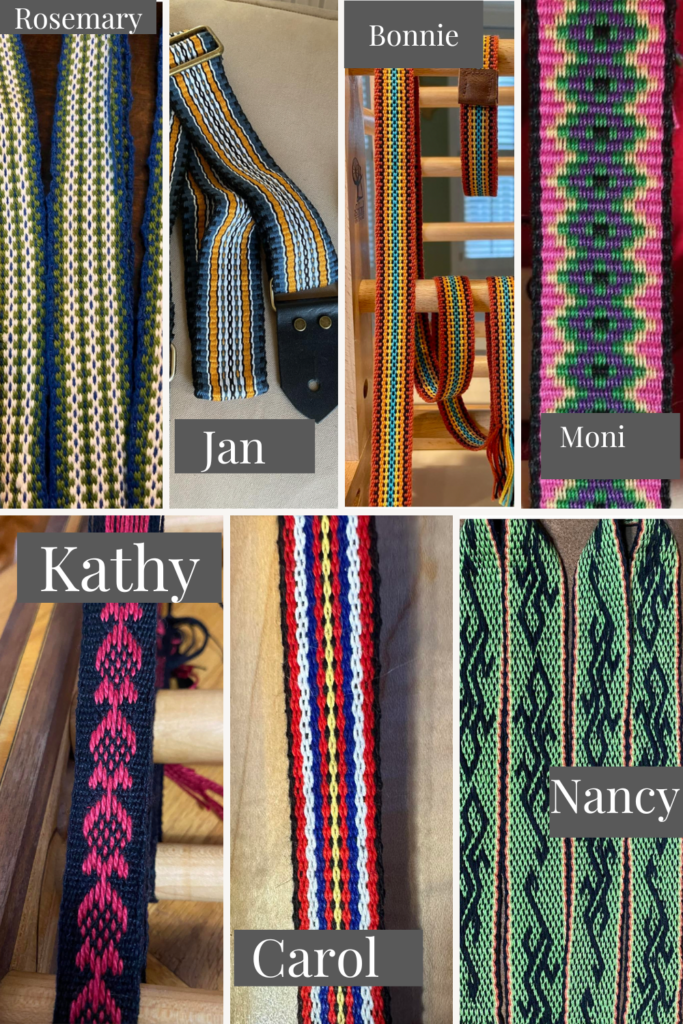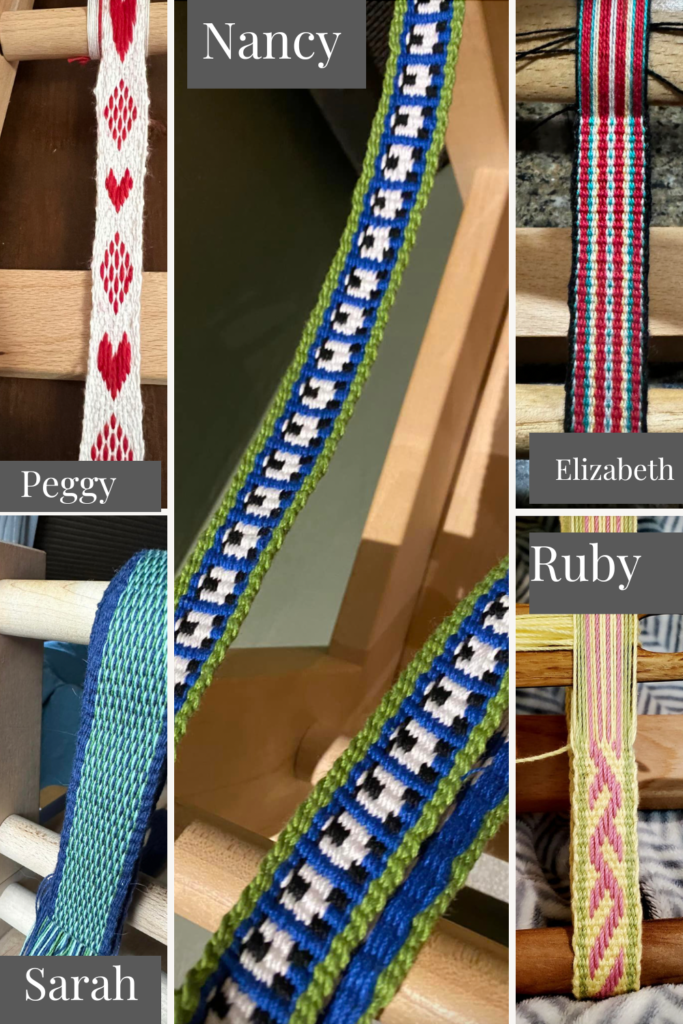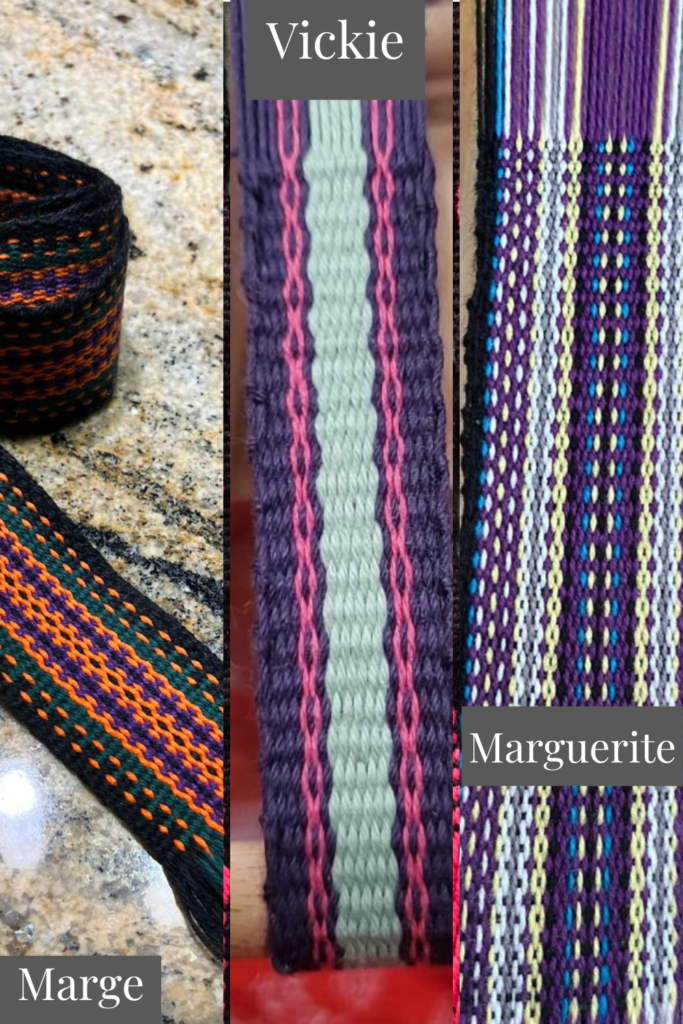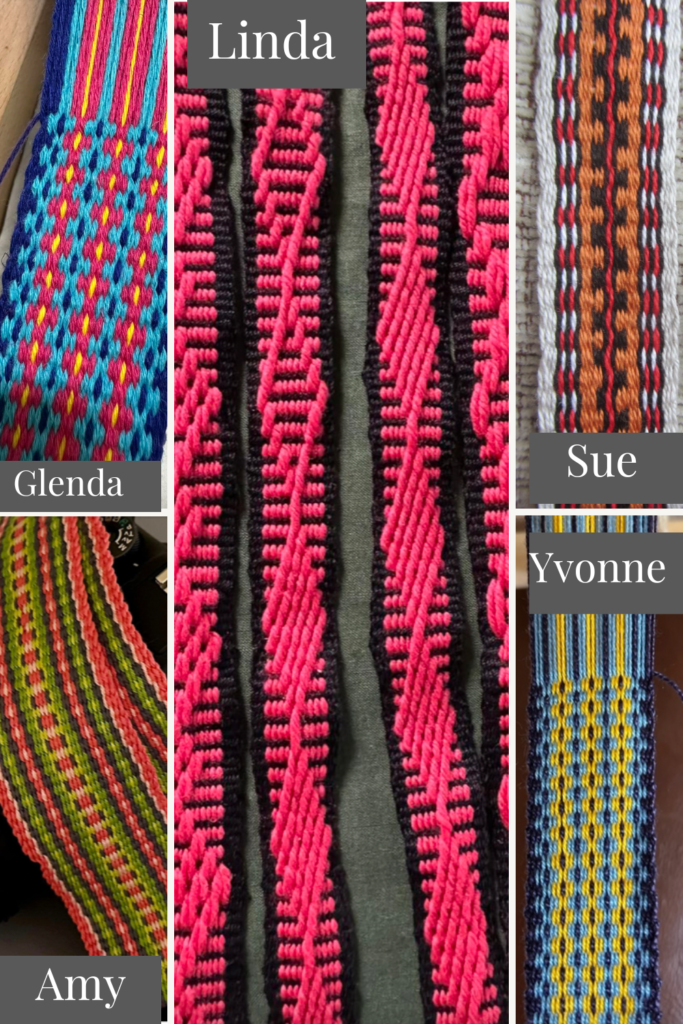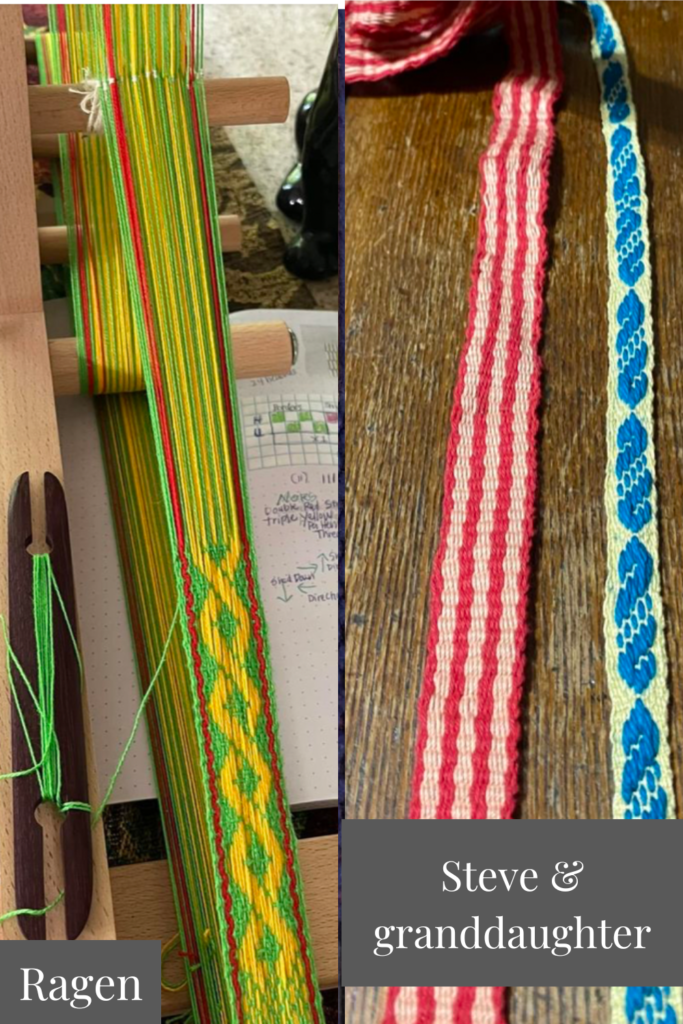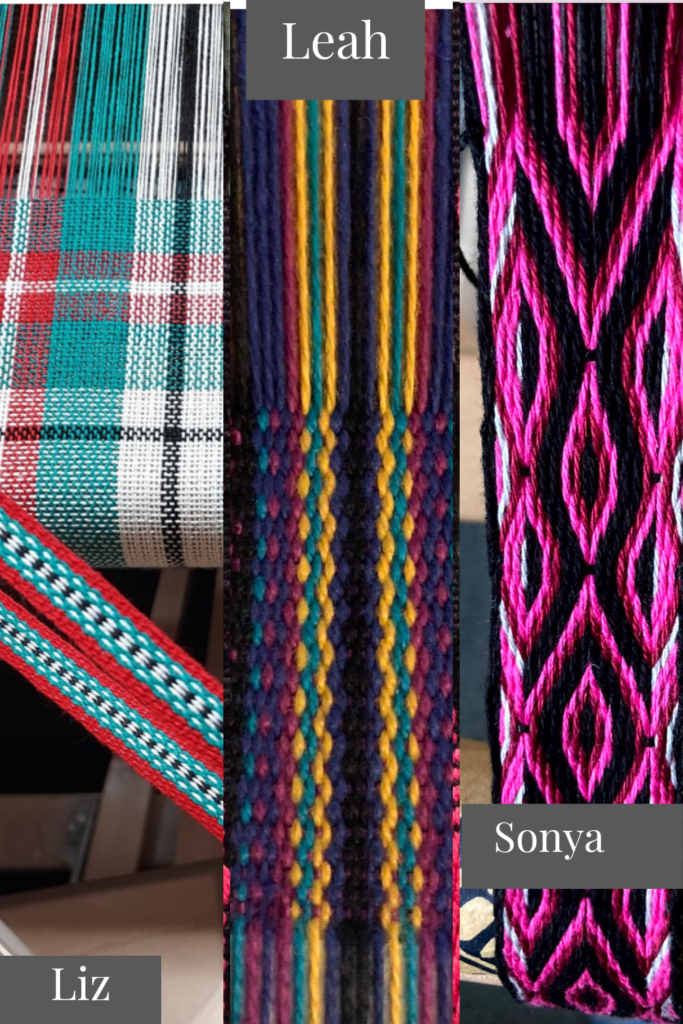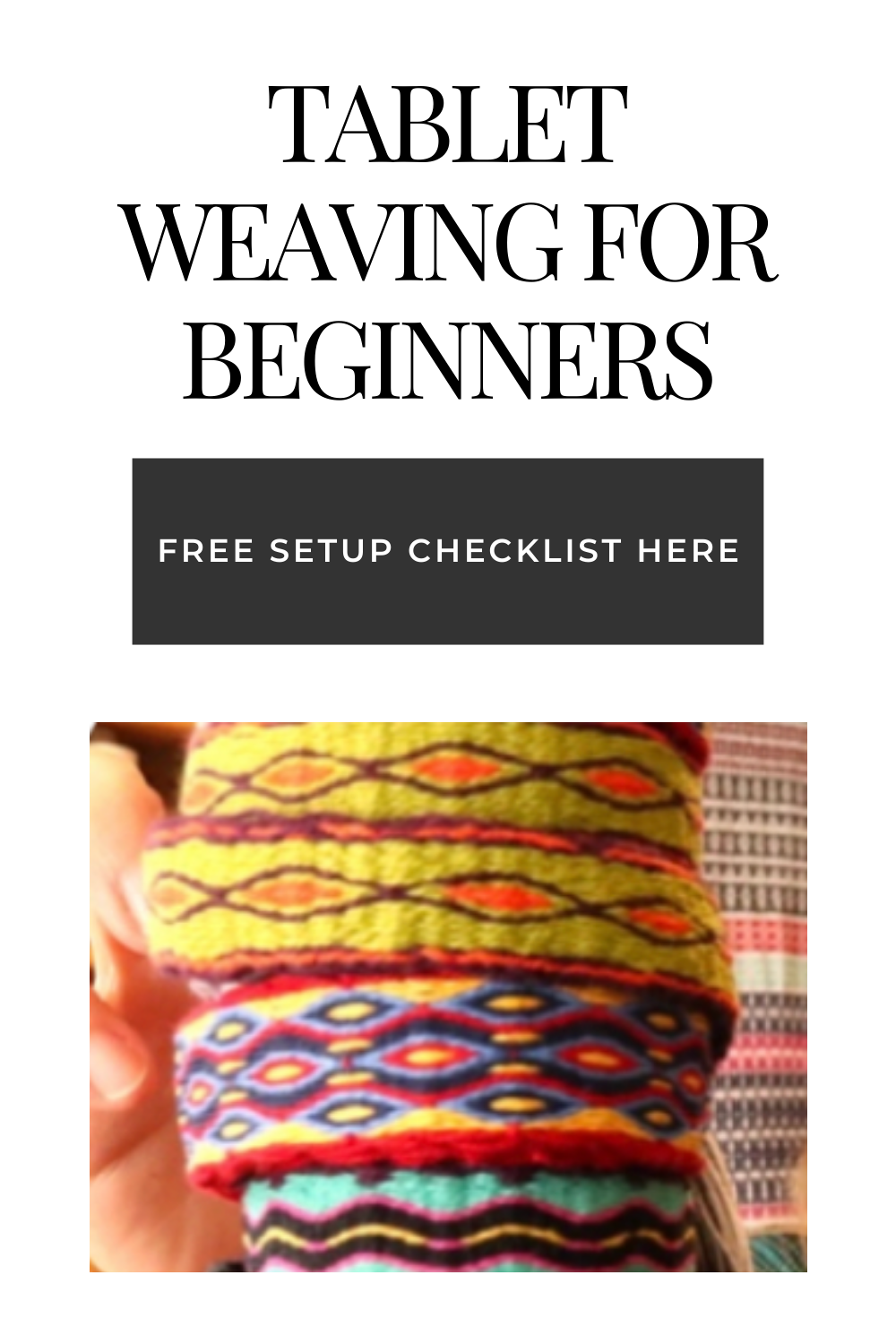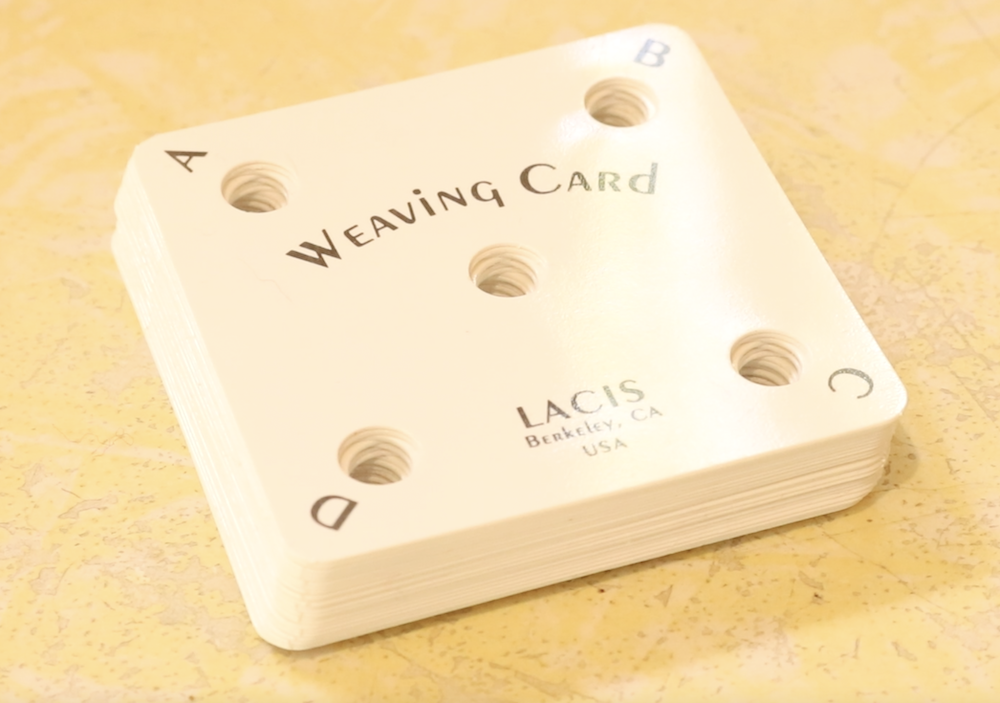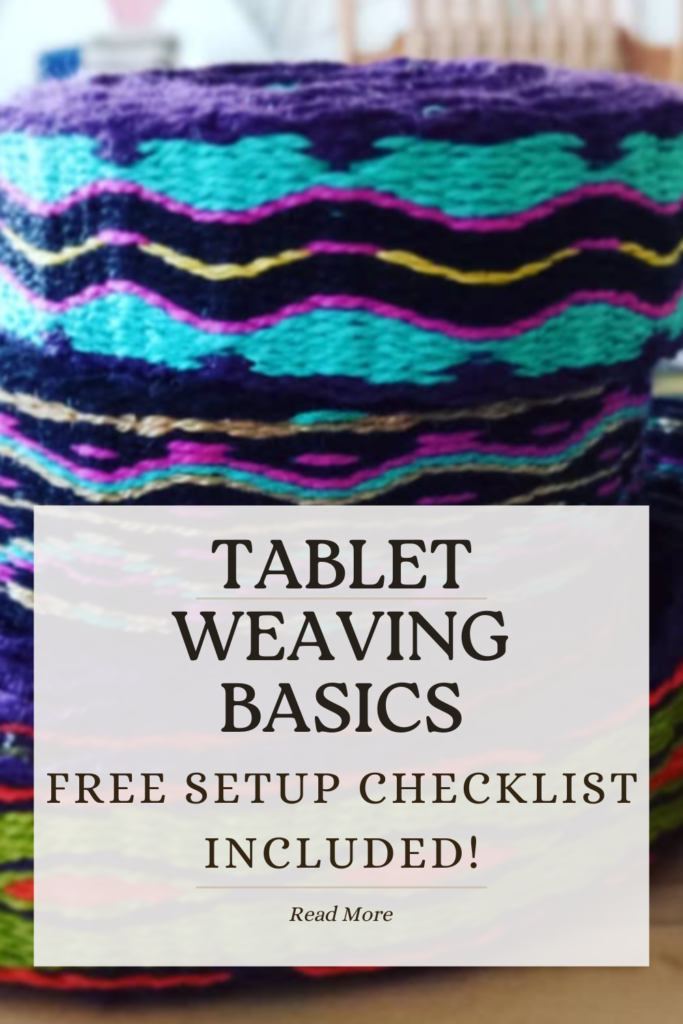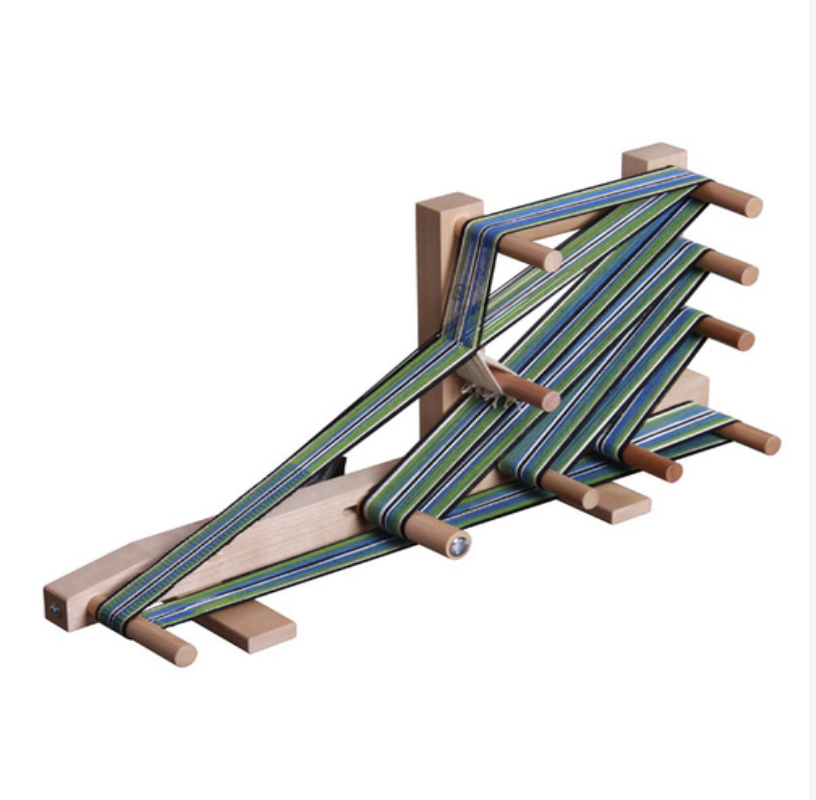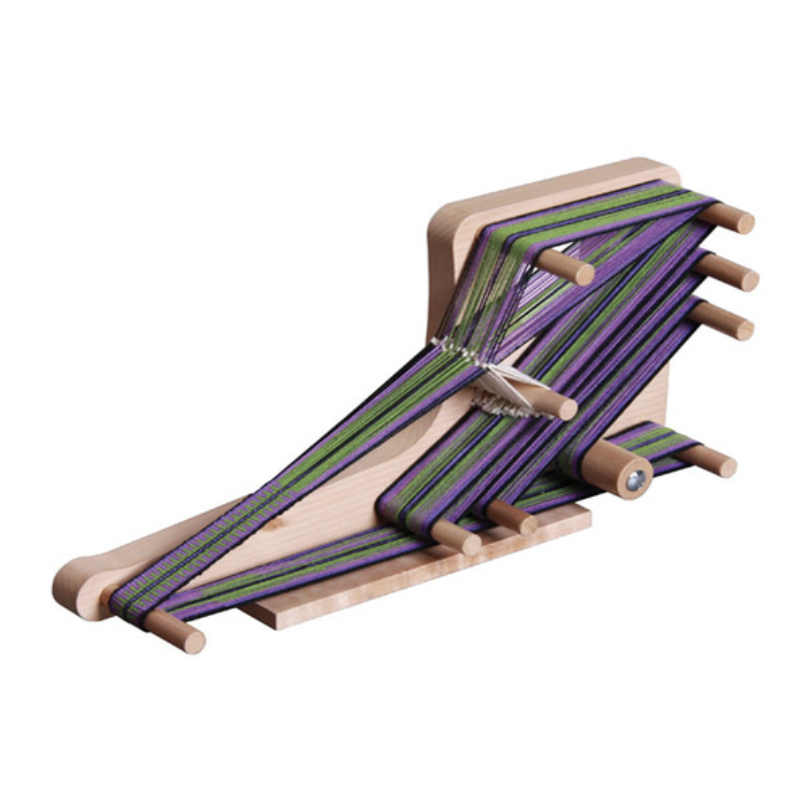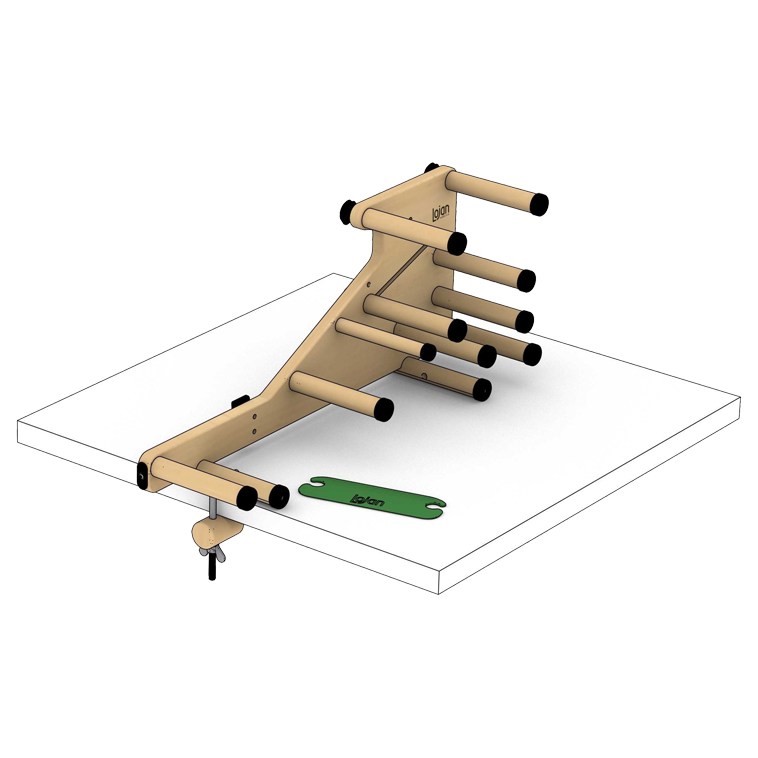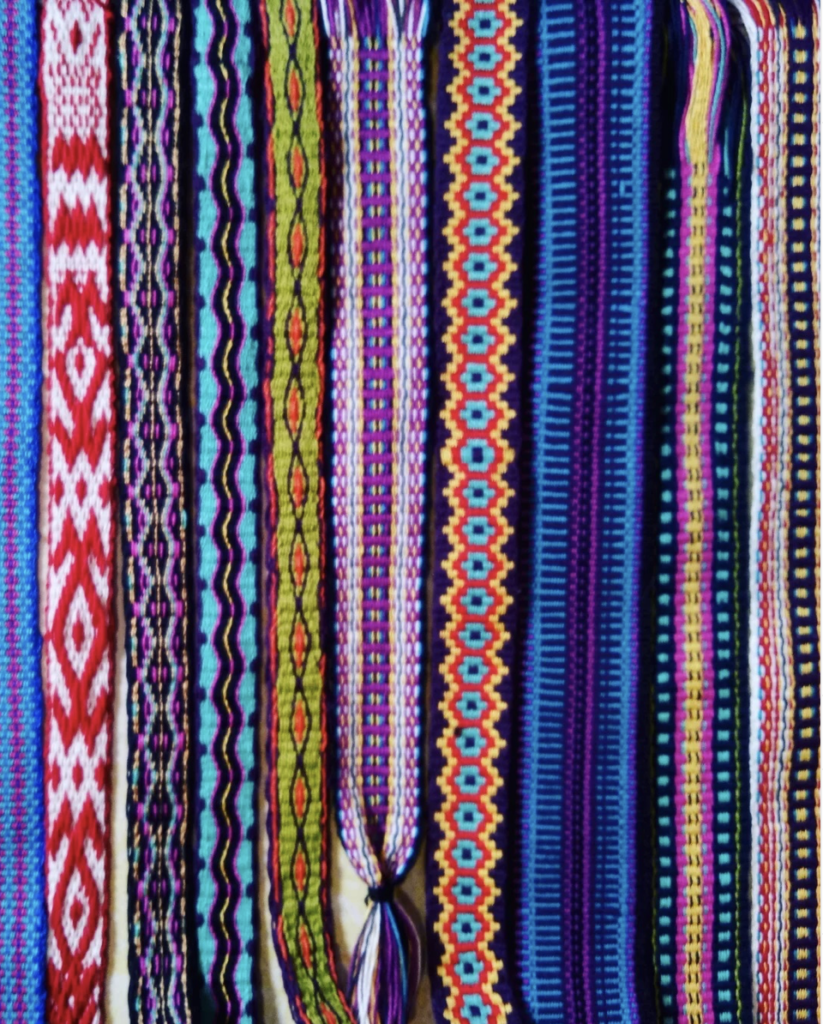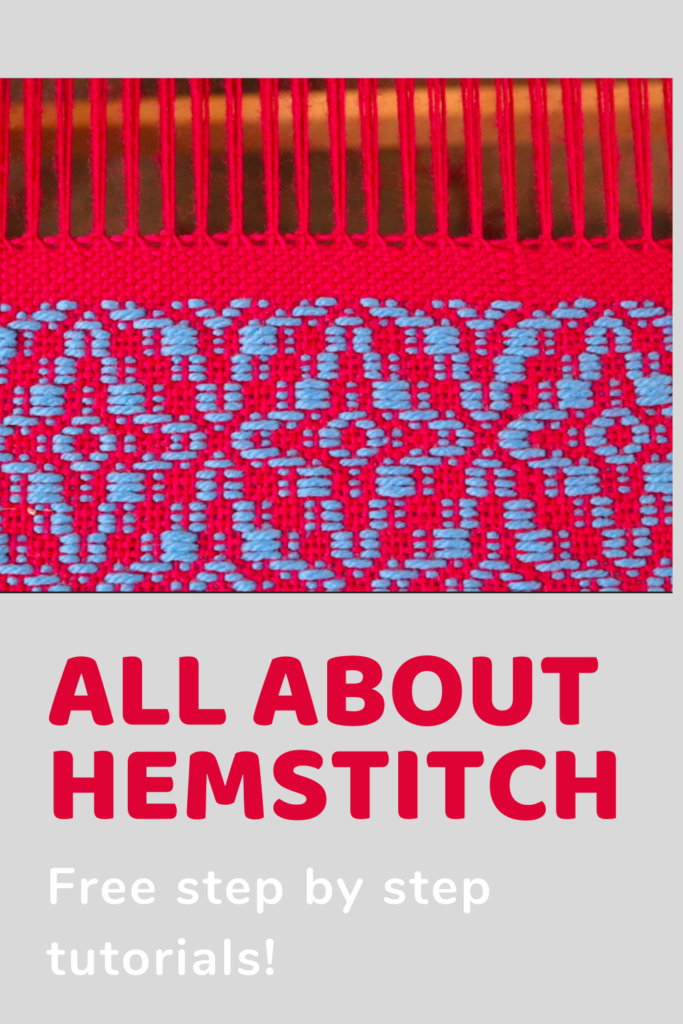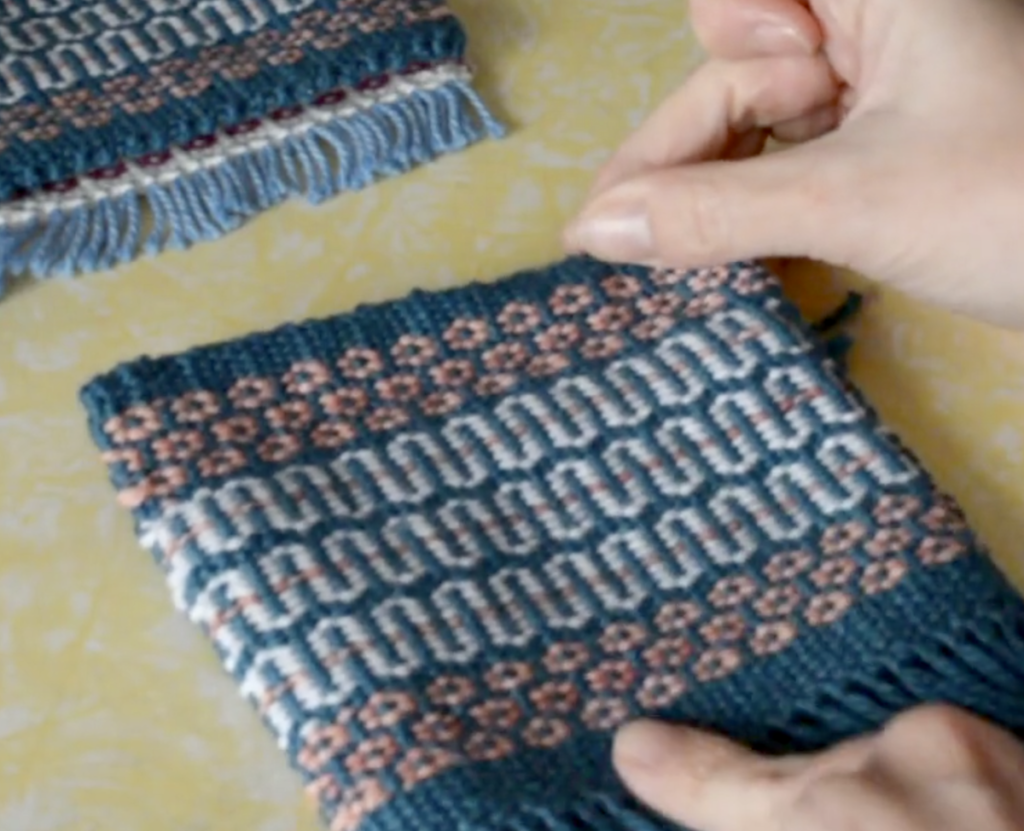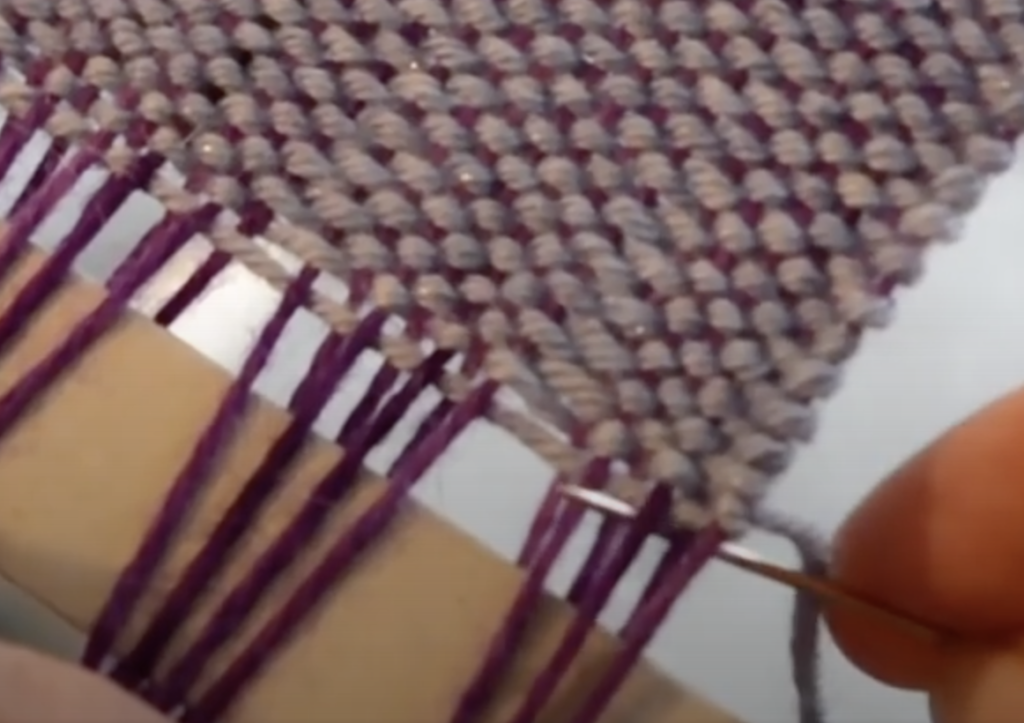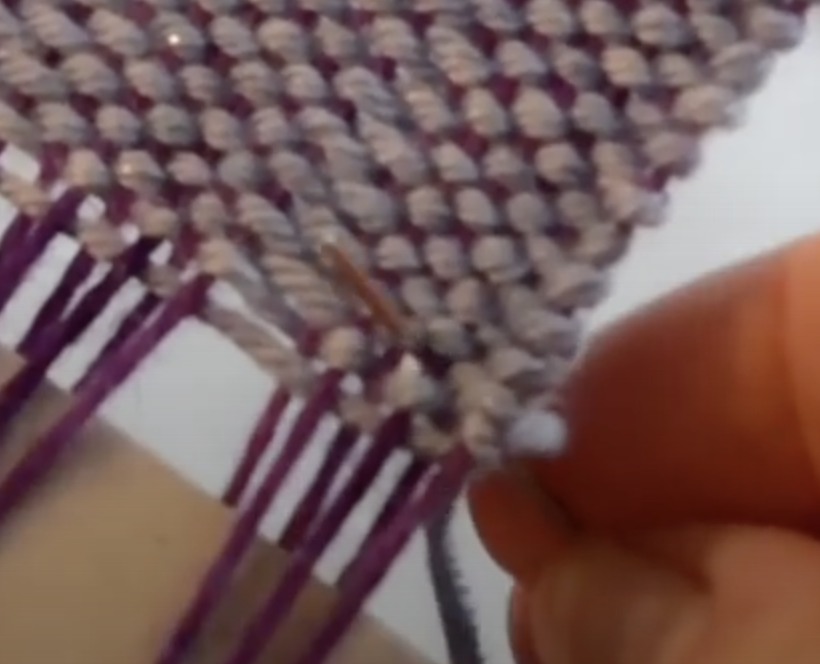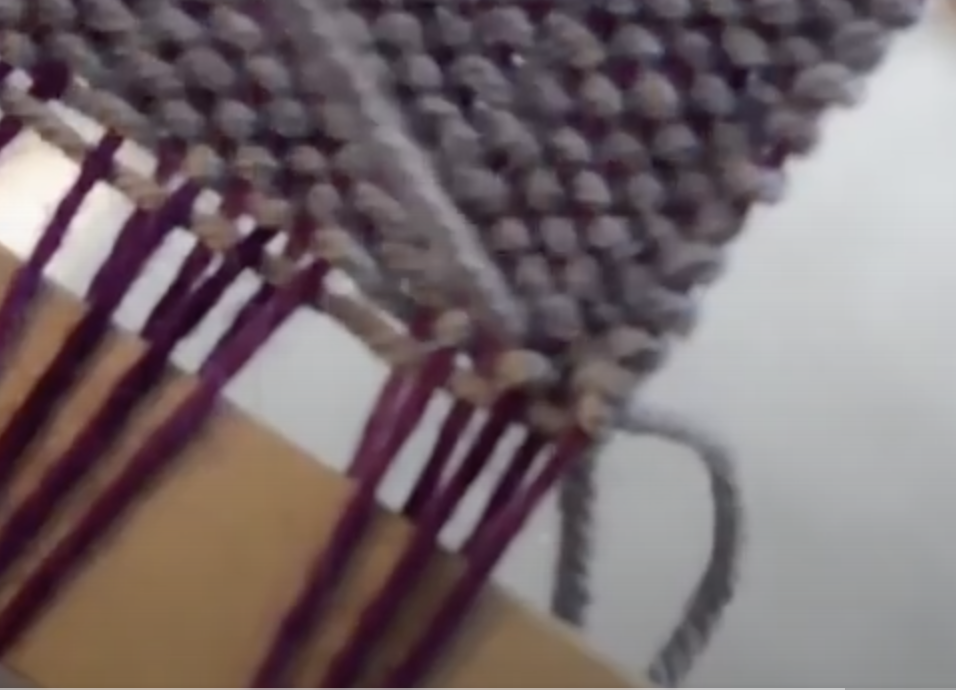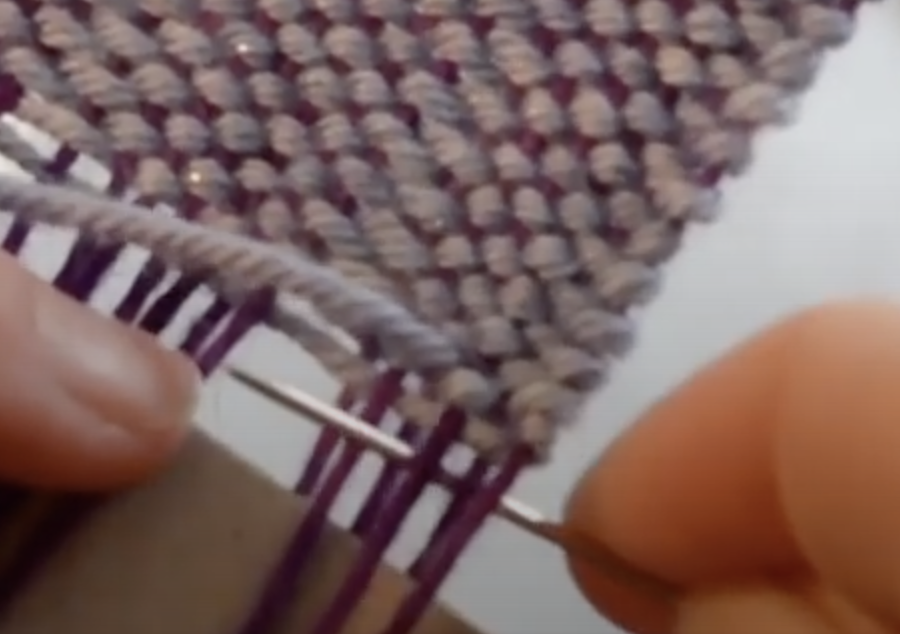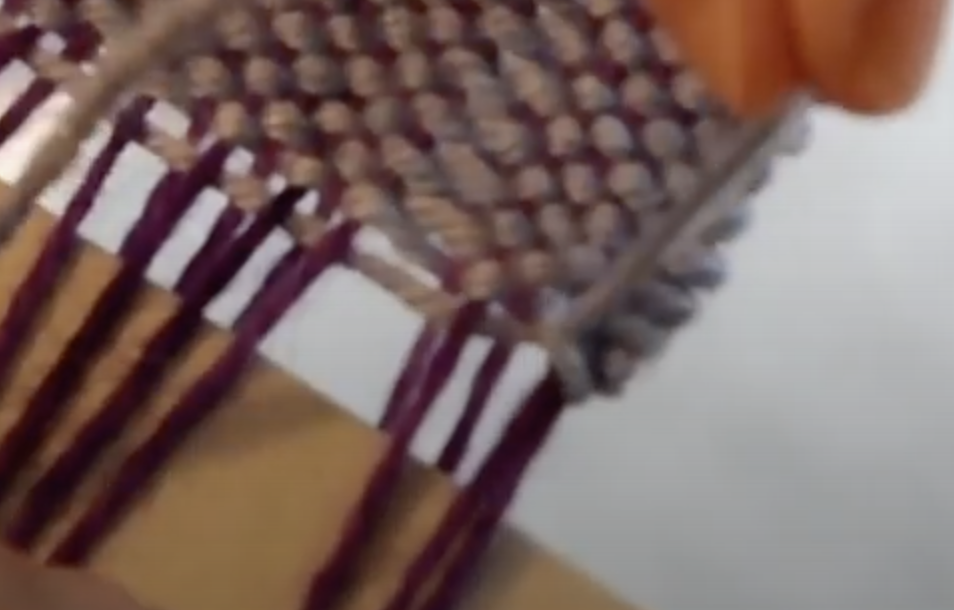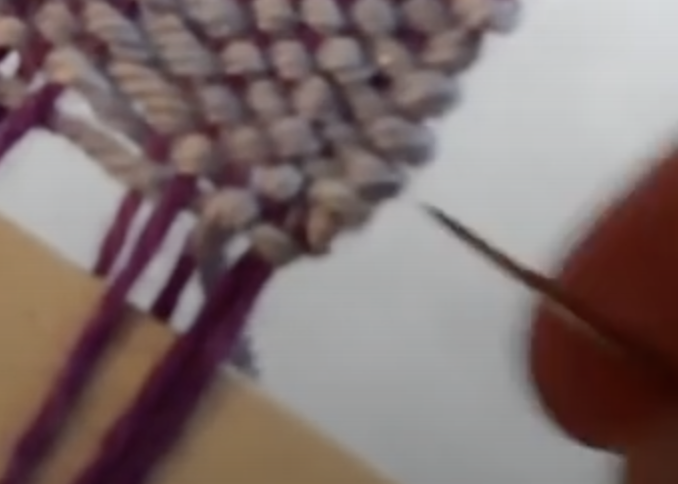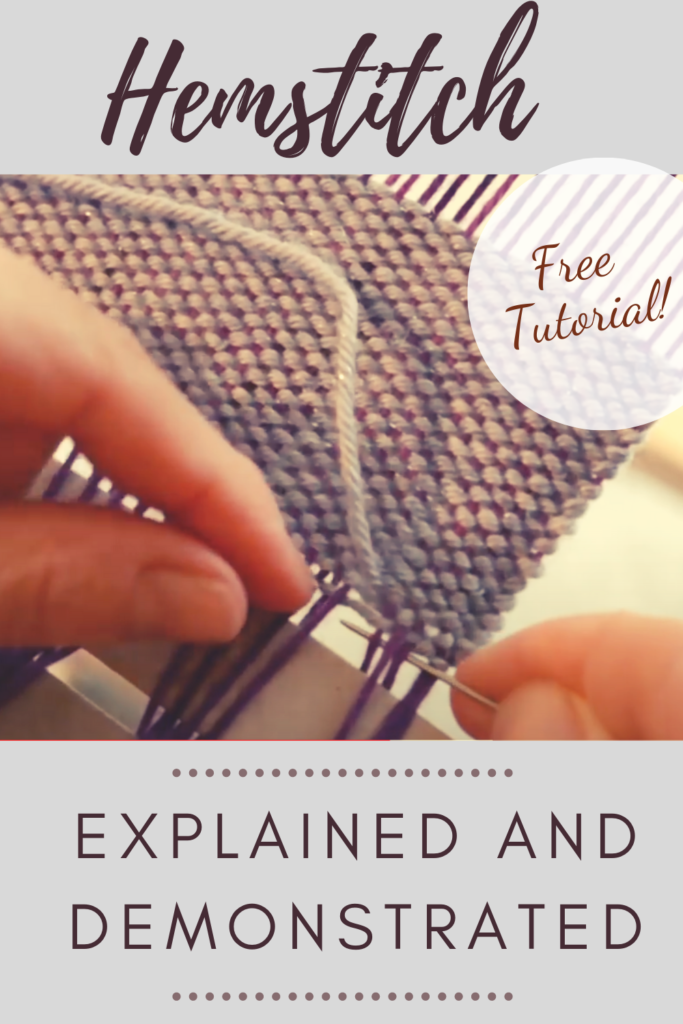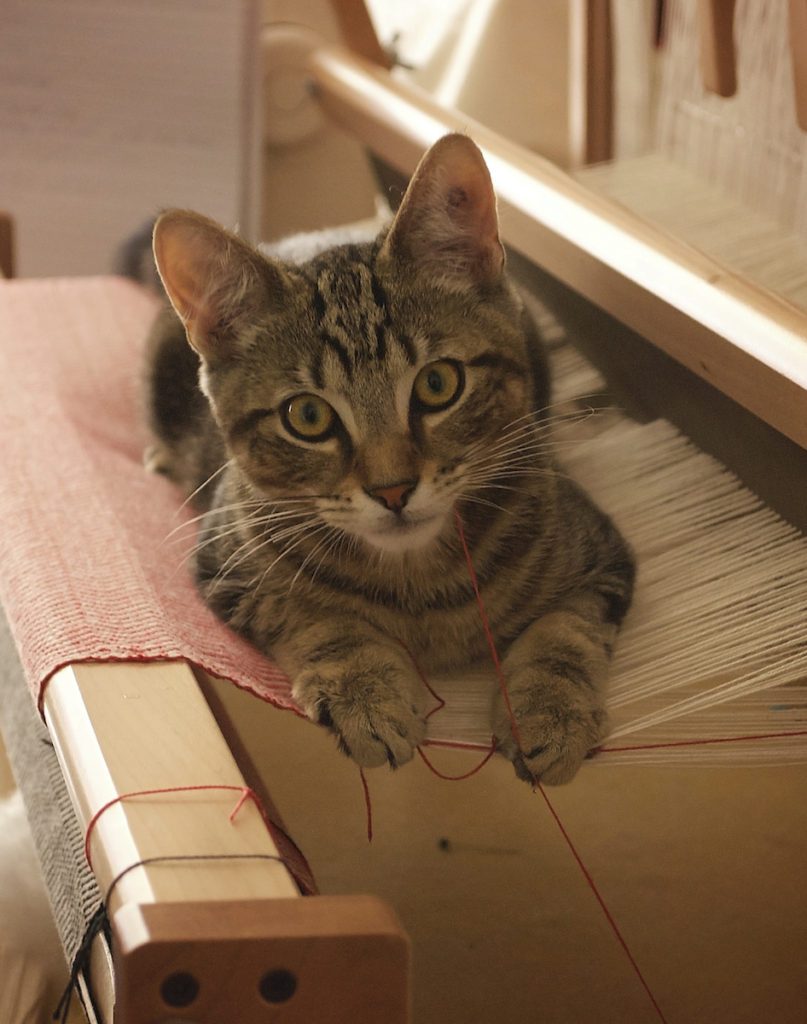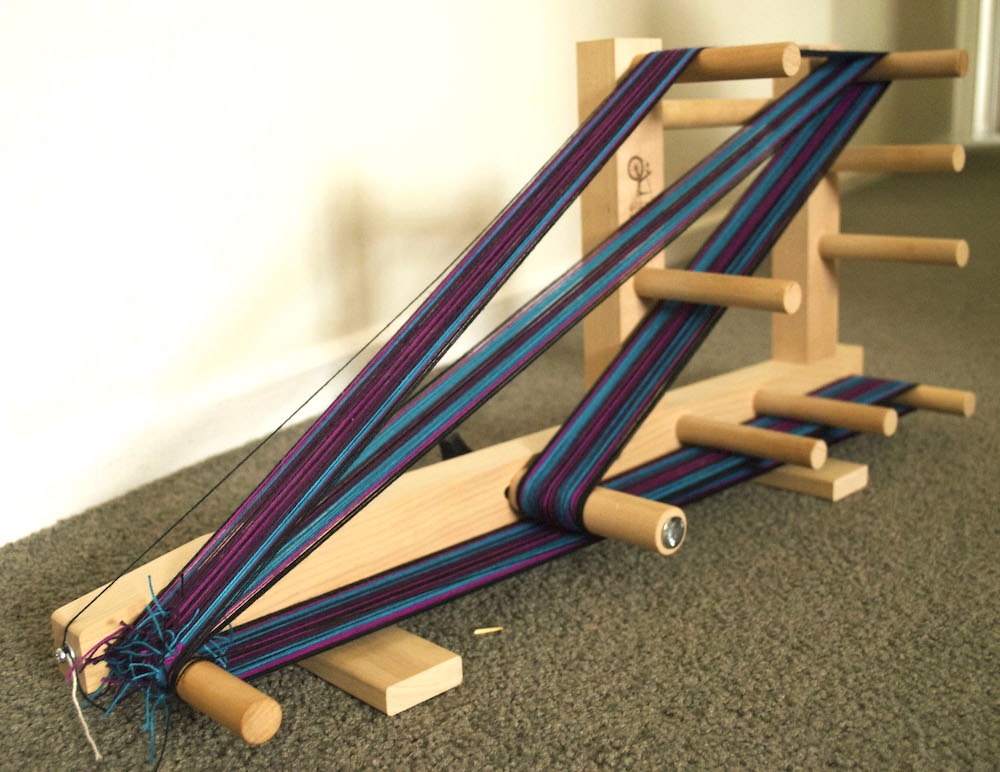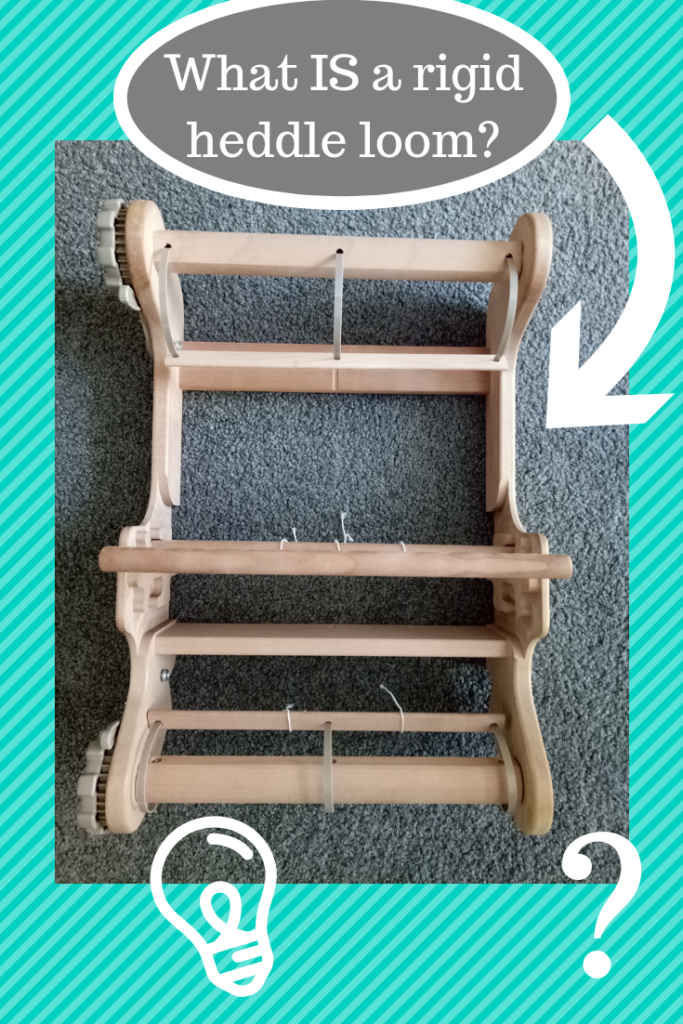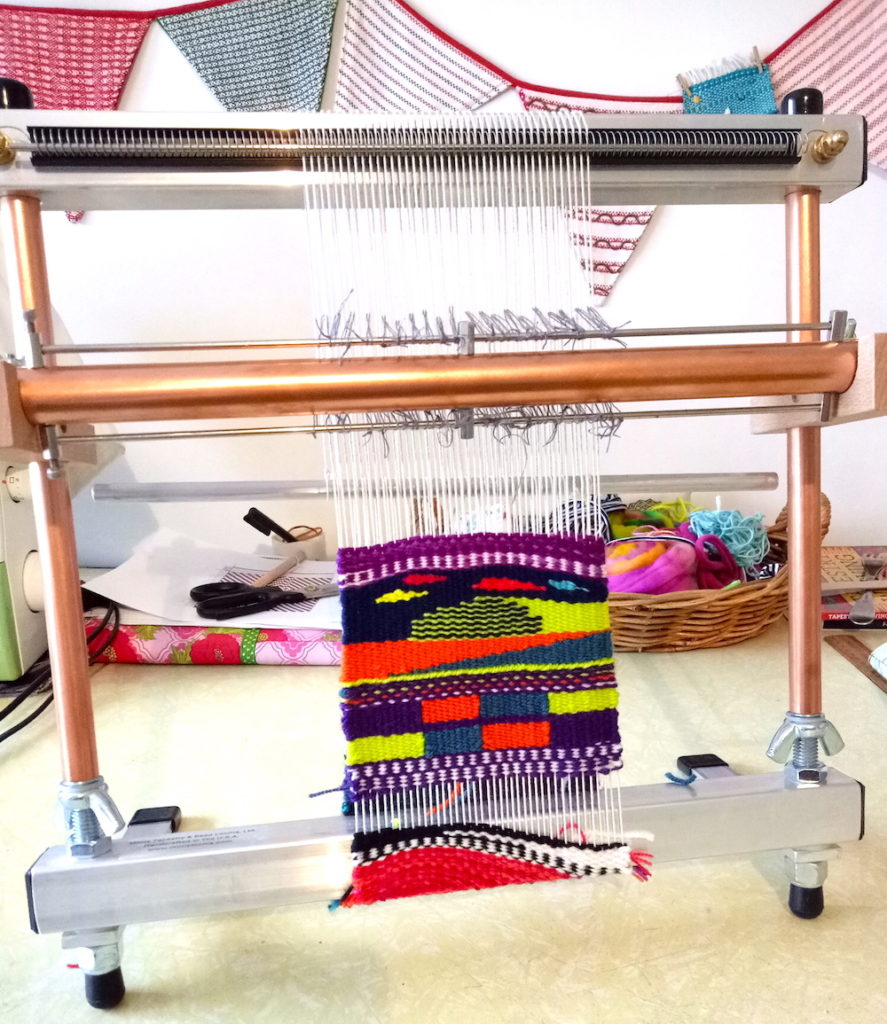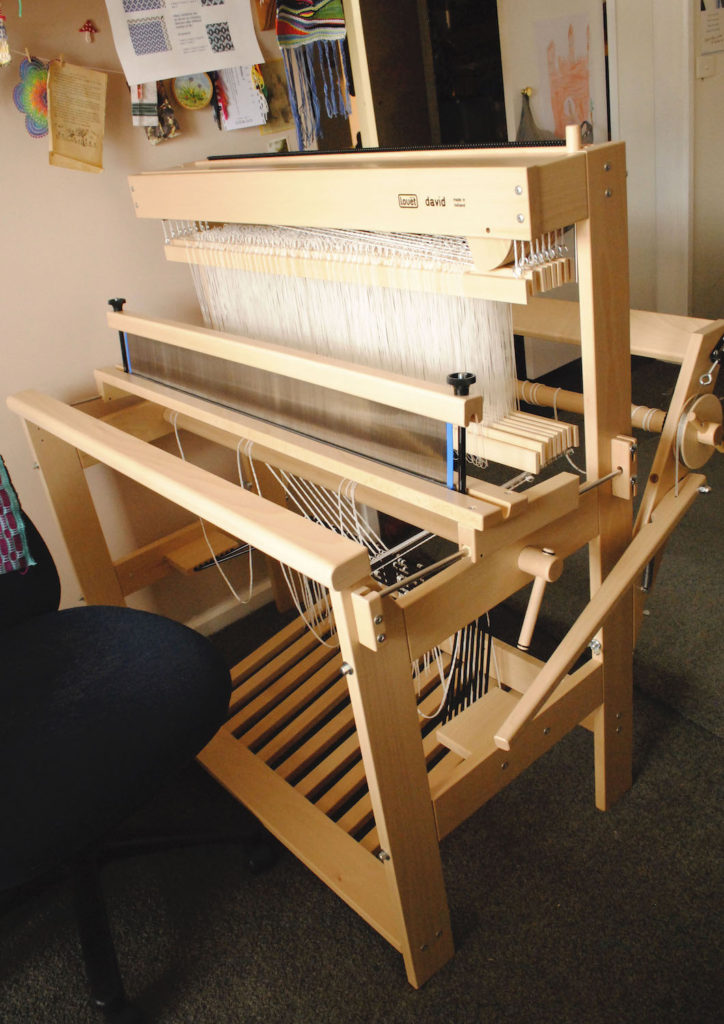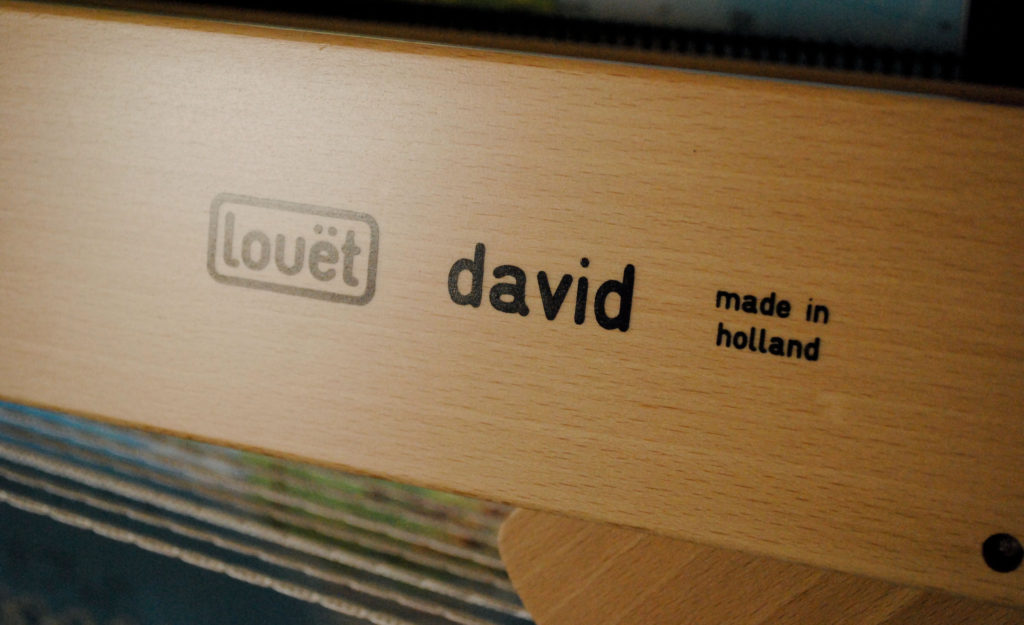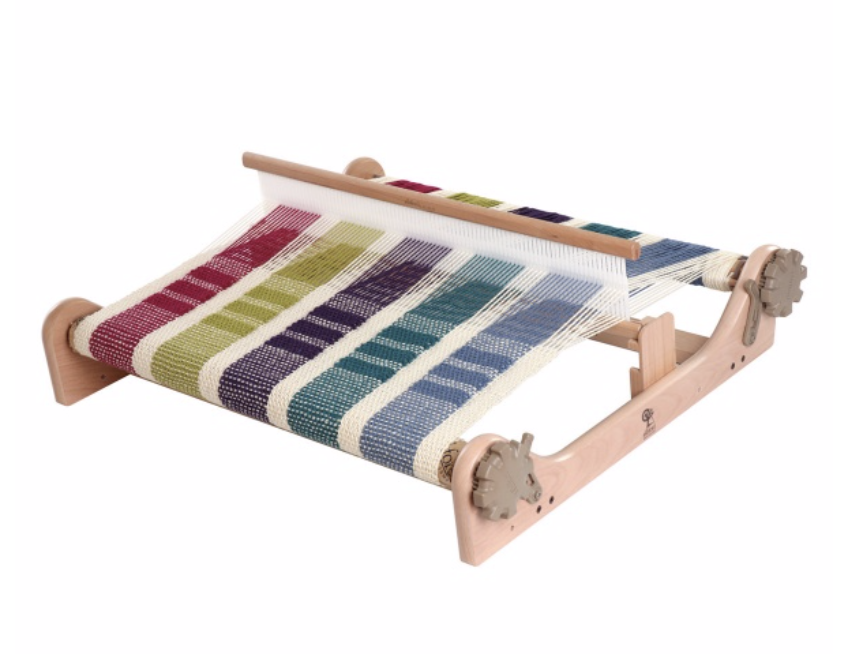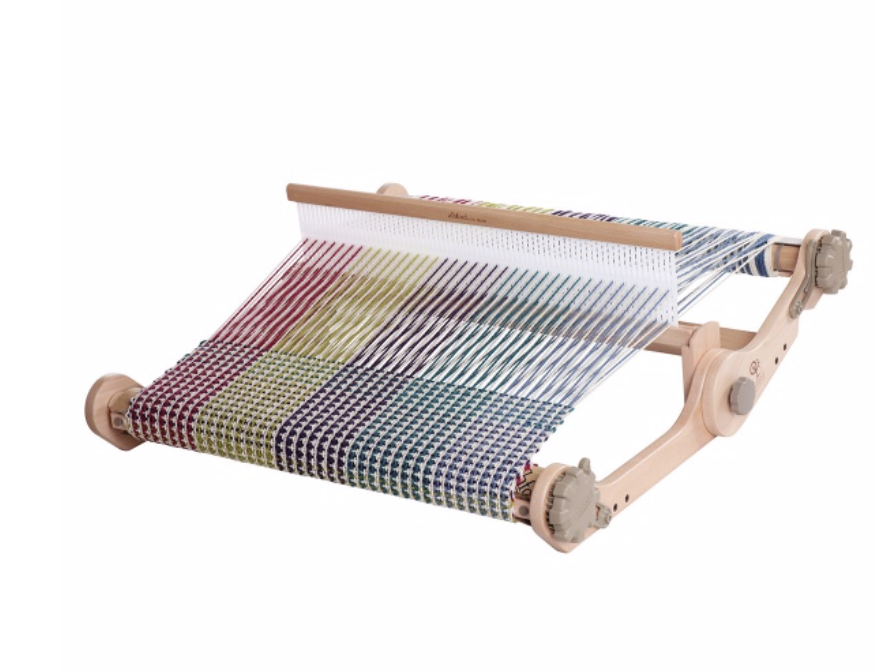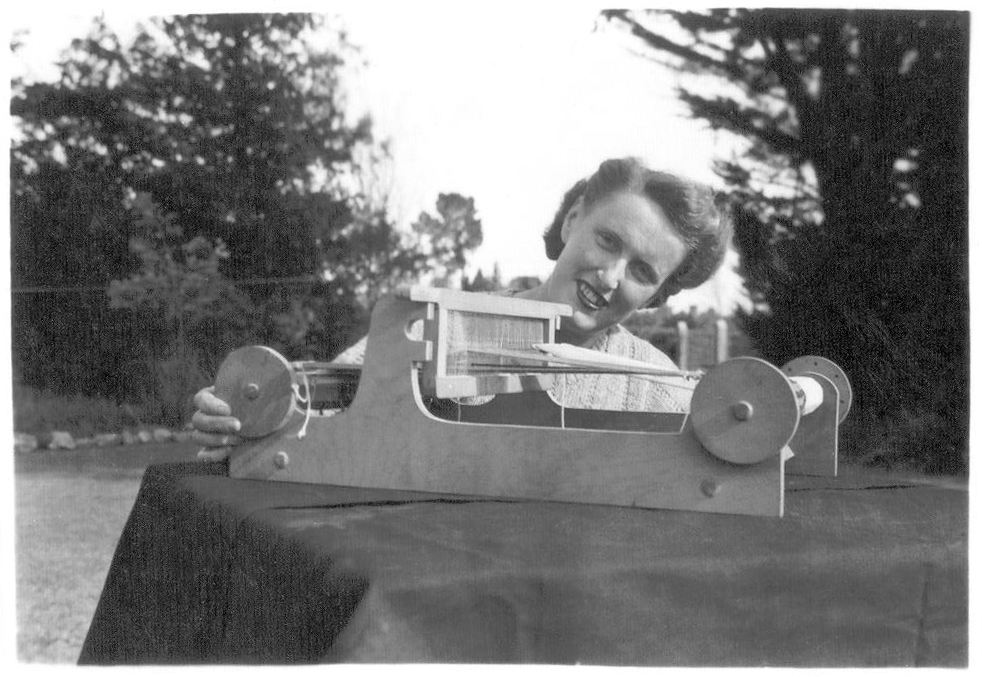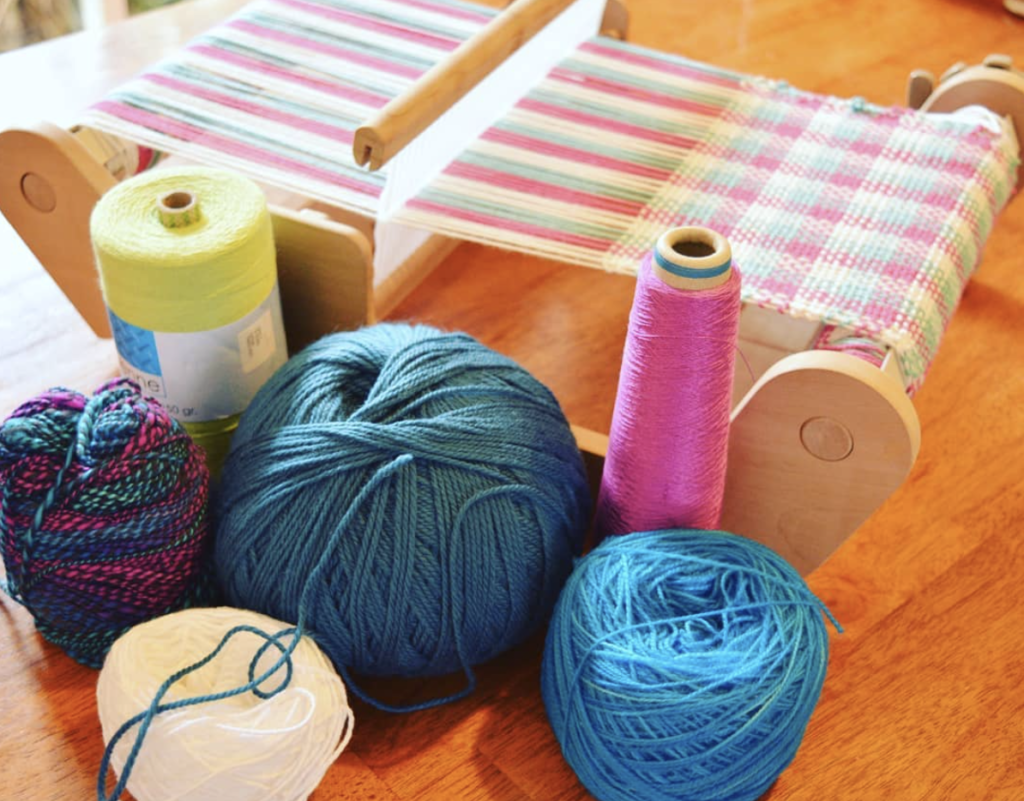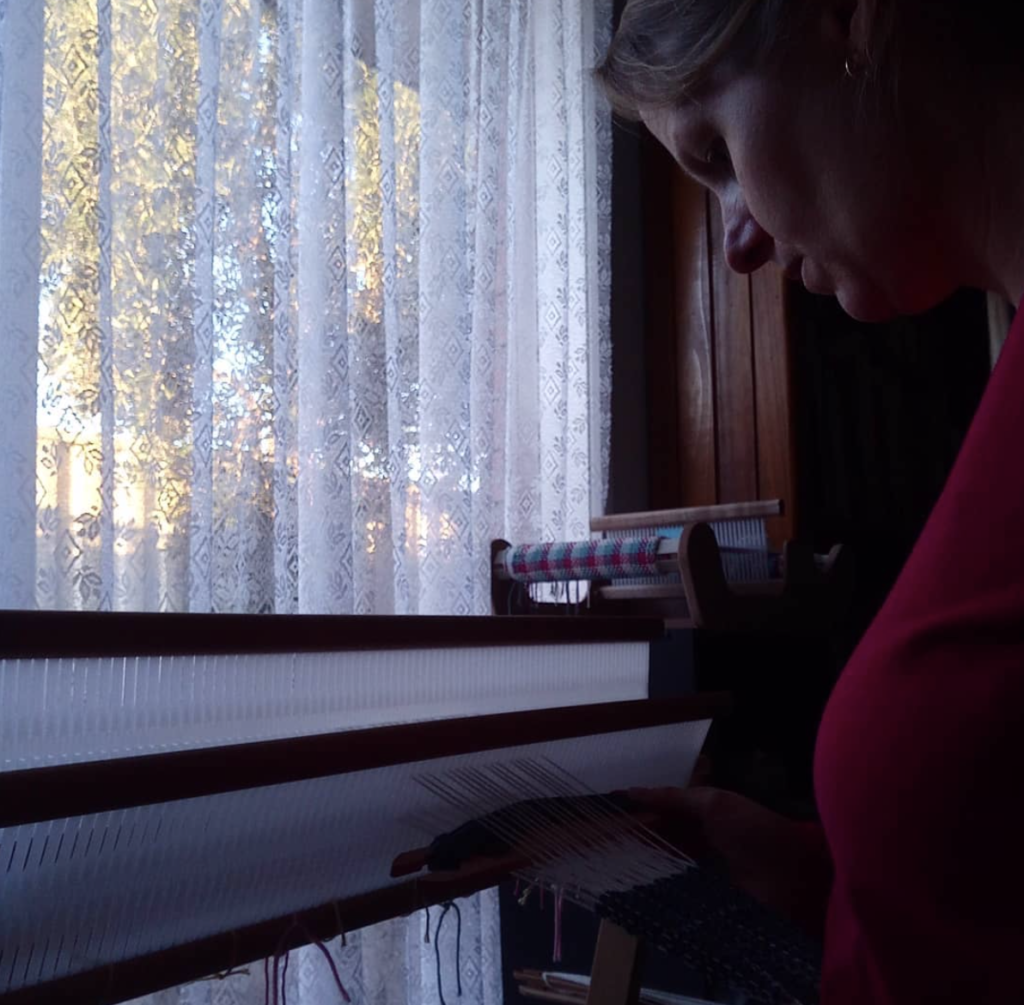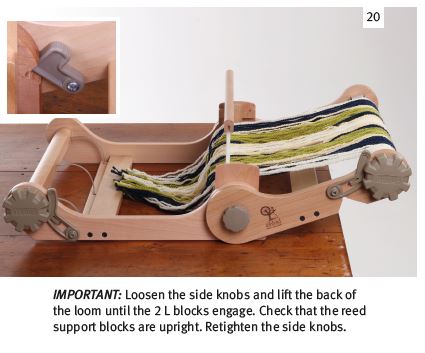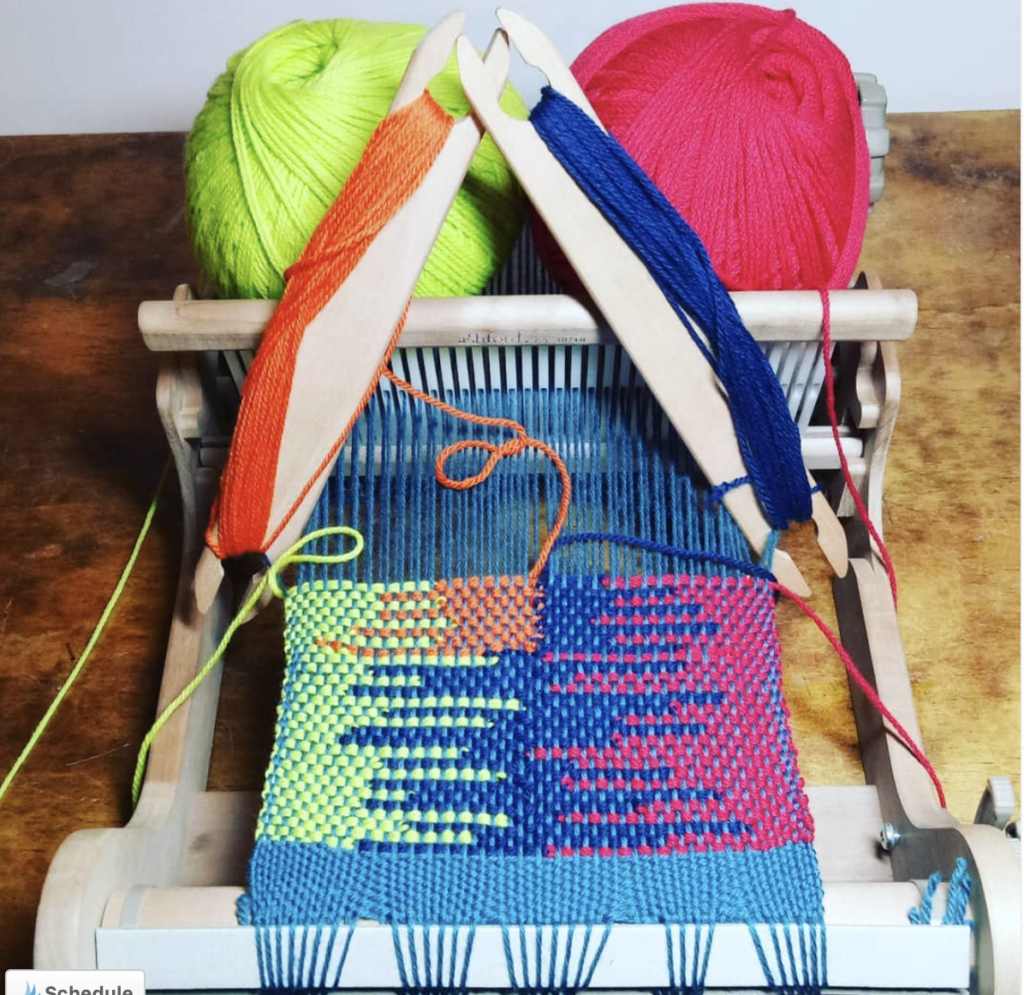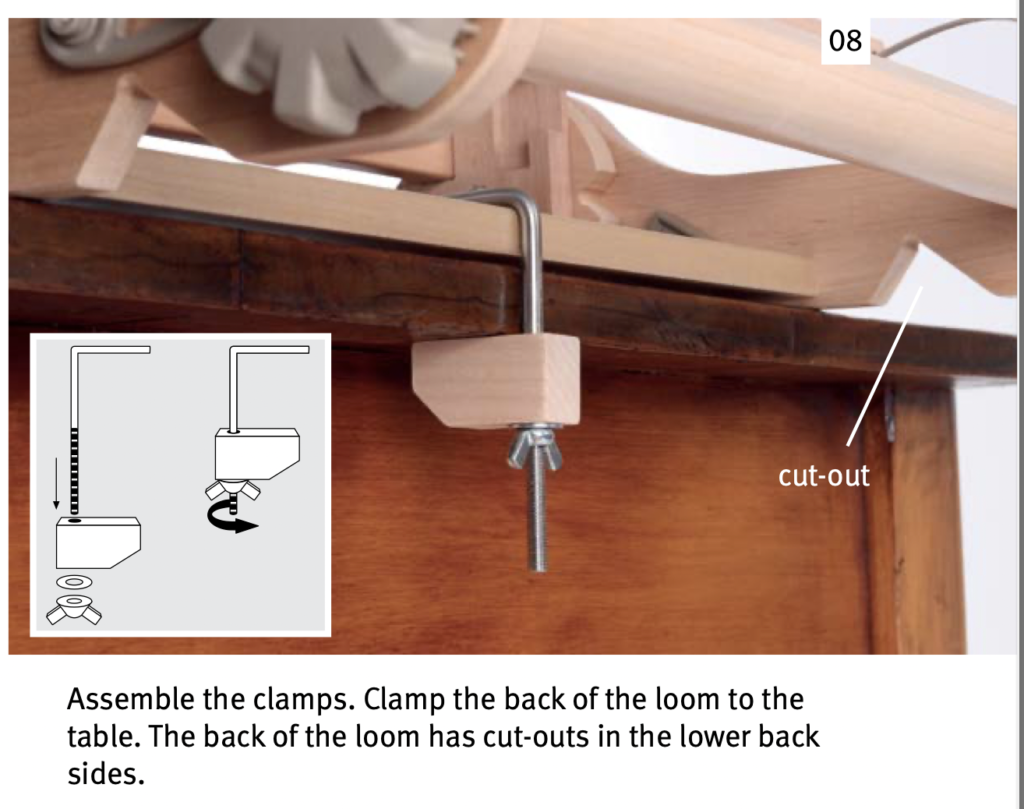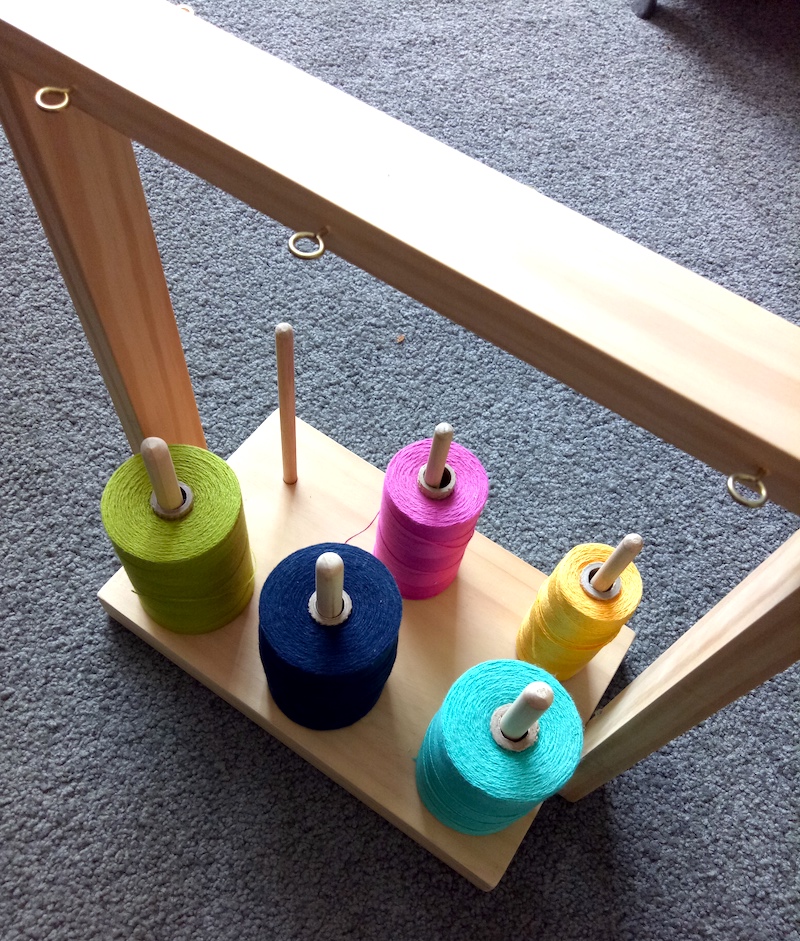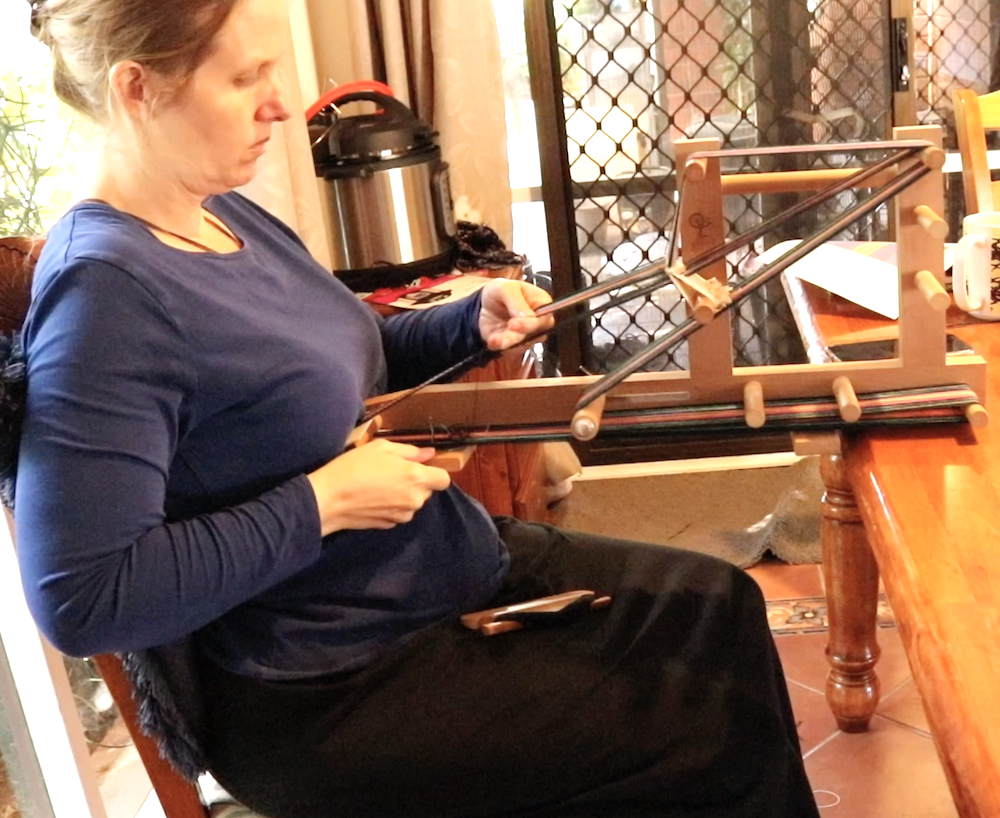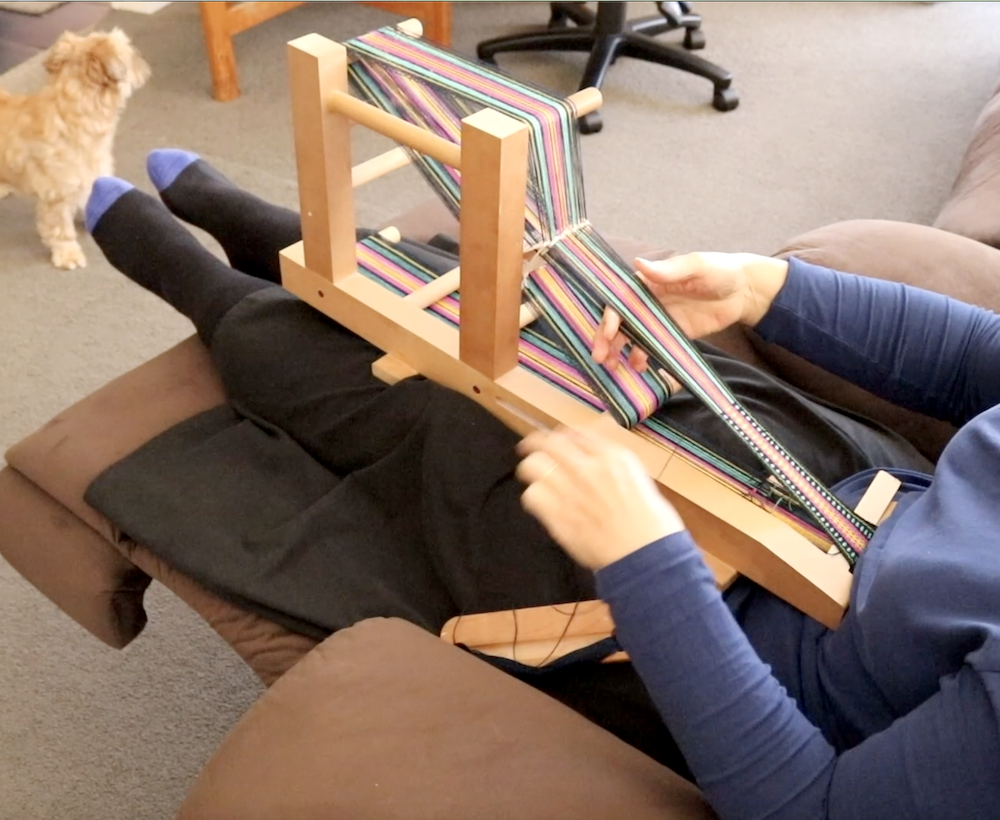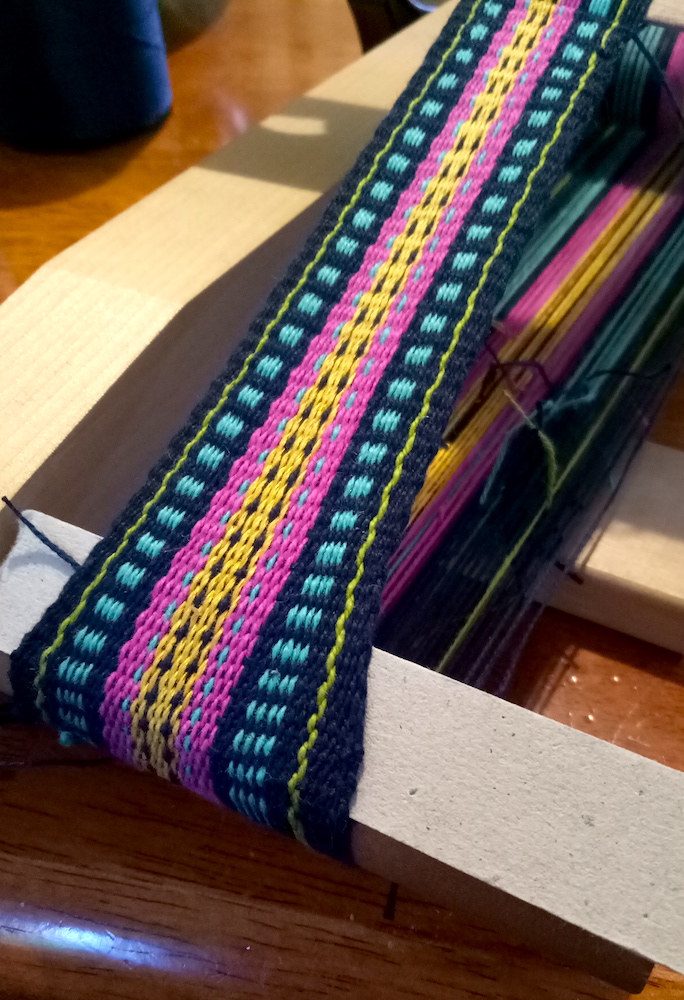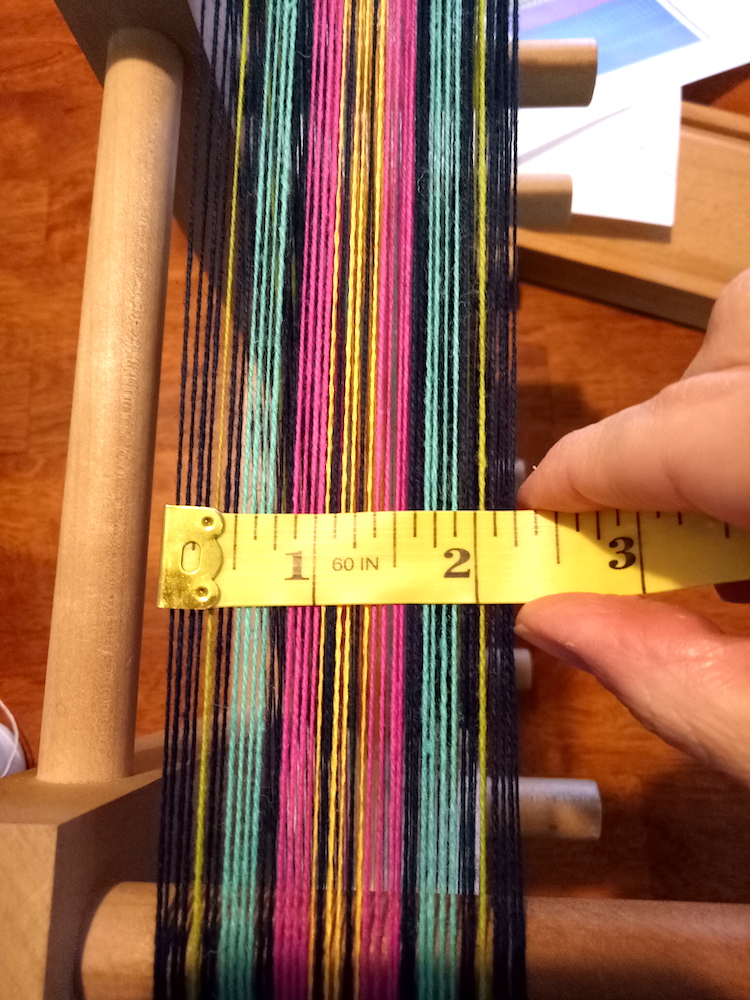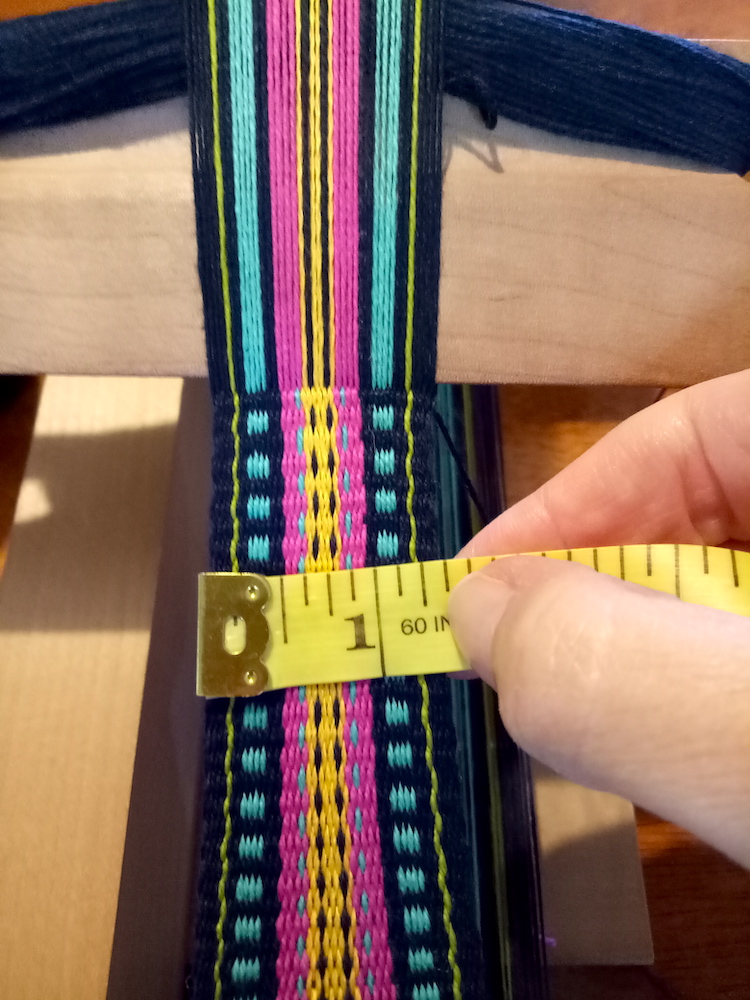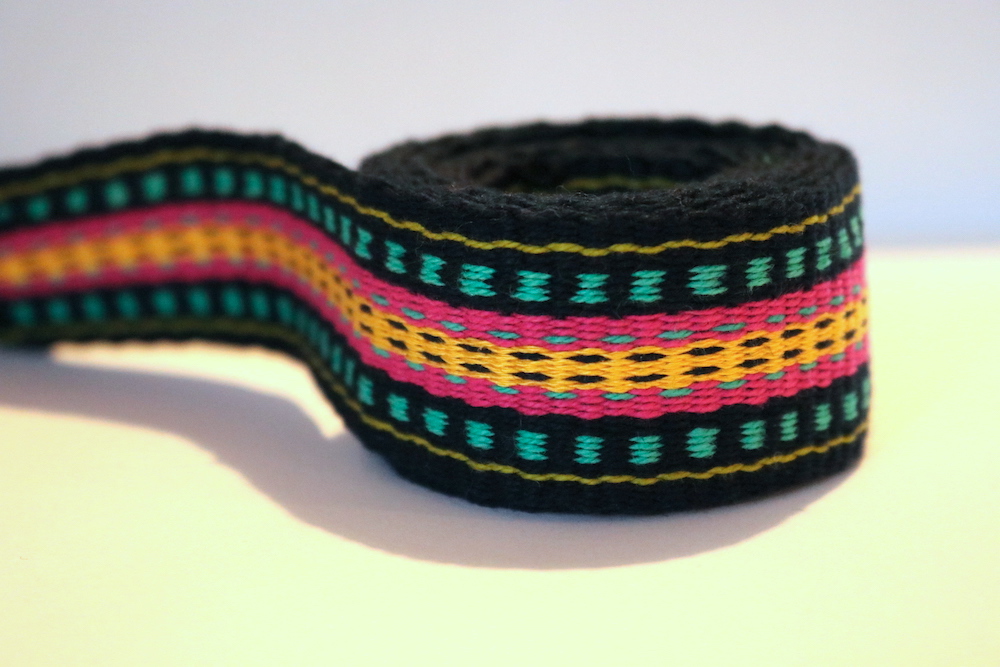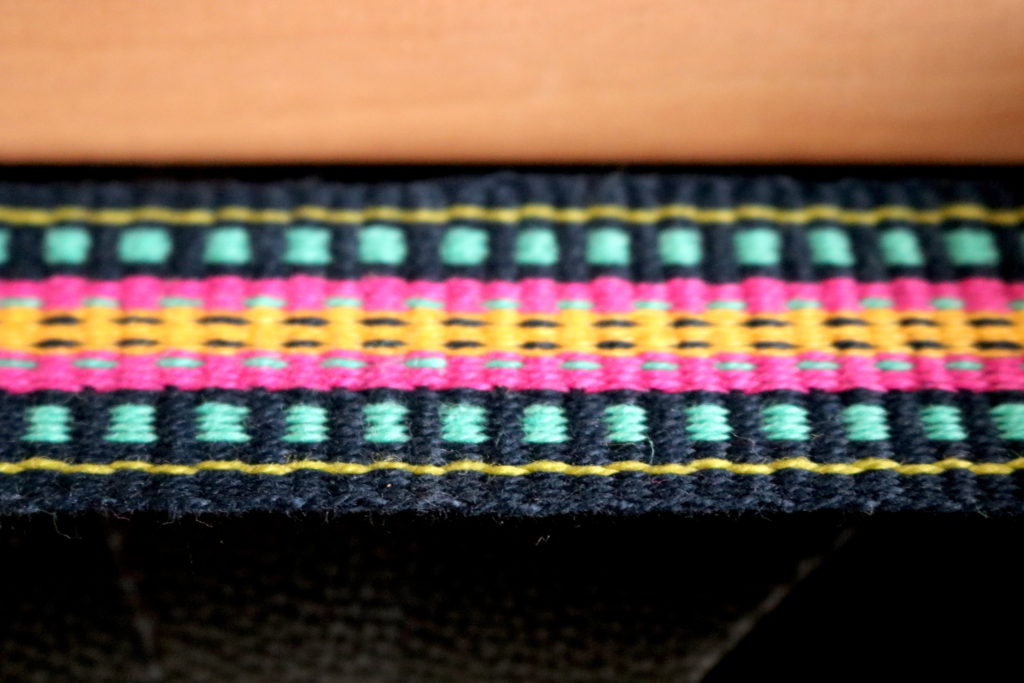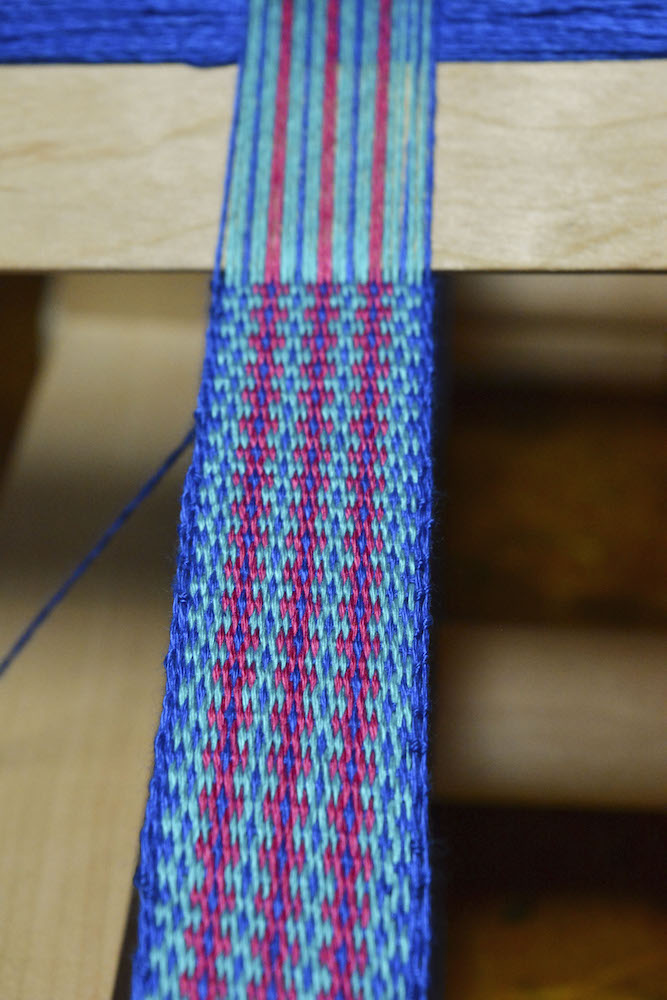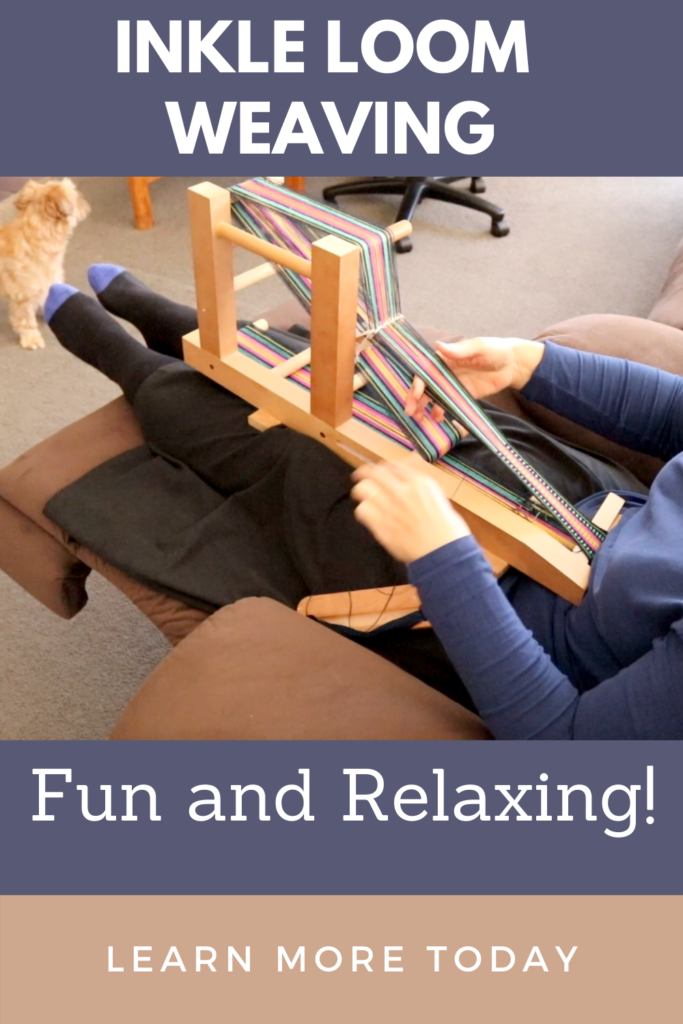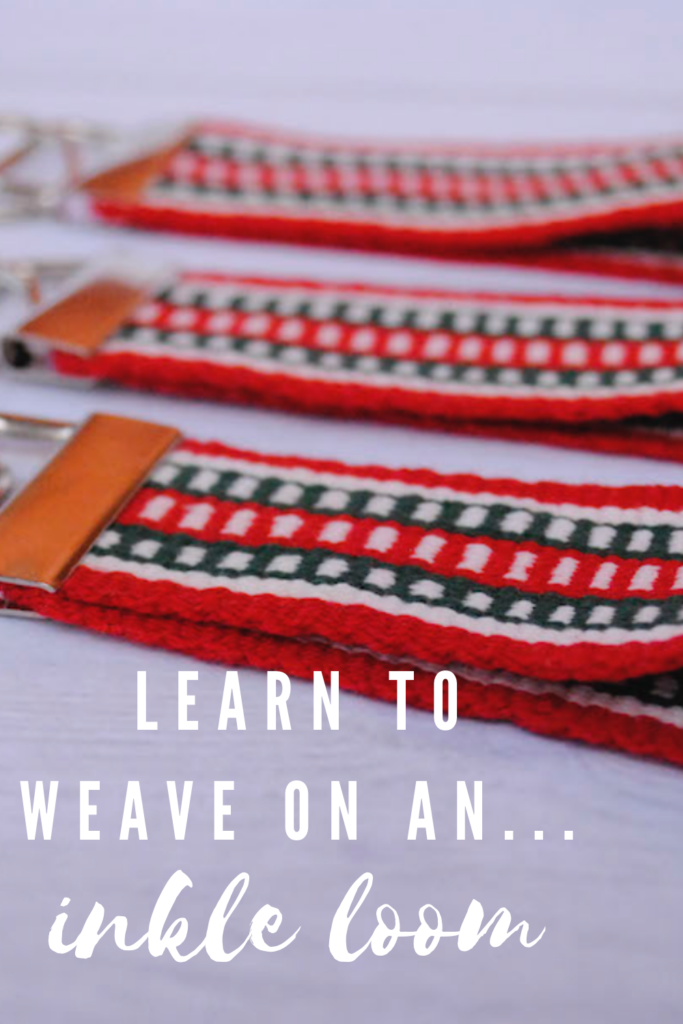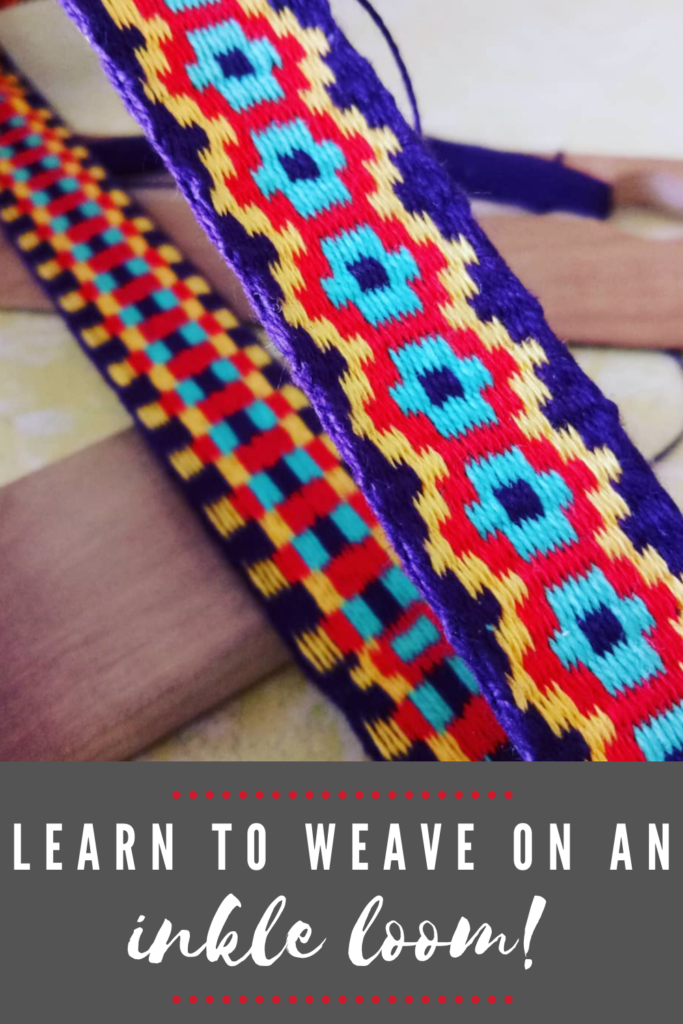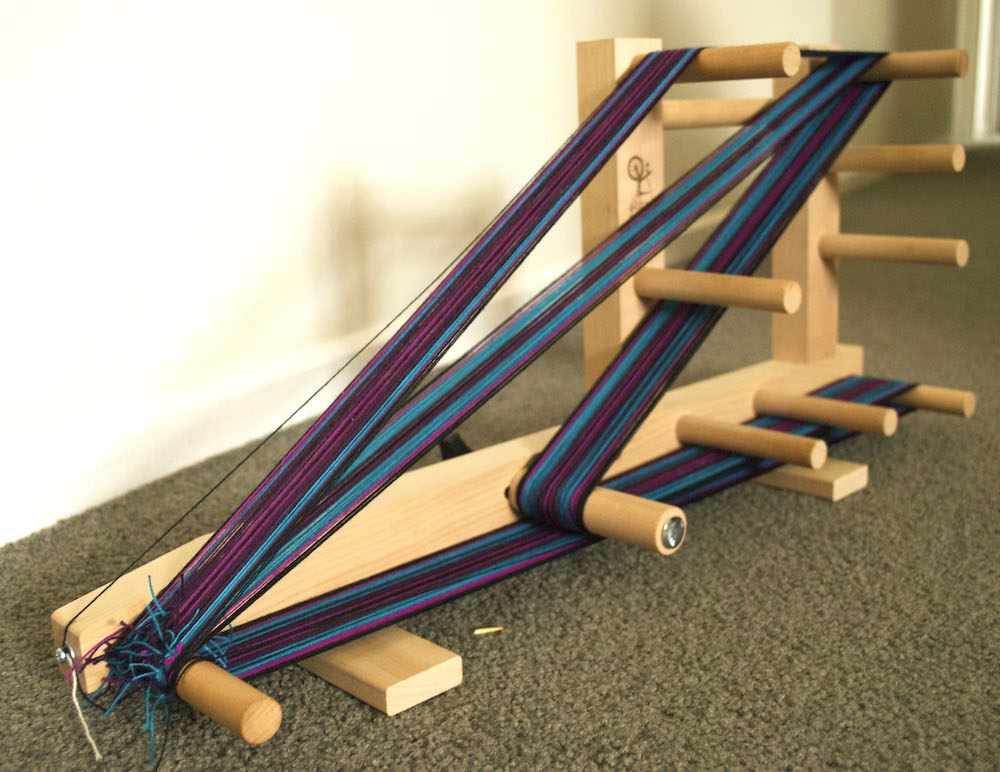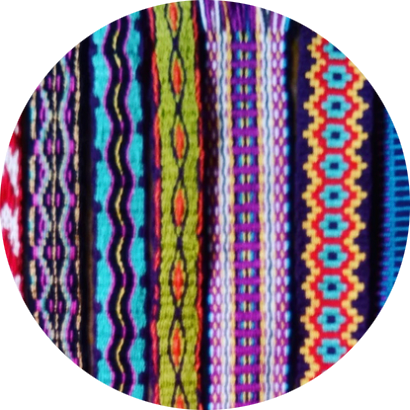If you’ve been on the hunt for a reliable and well-designed inkle loom, let me introduce you to the Lojan Inkle Loom—a game-changer for weaving inkle bands! I’ve had the pleasure of weaving on this loom for a while now, and I have to say, it’s my new favourite Inkle Loom.
Let’s dive into what makes this loom so great!
What I Love About the Lojan Inkle Loom:
Sturdy Construction
One of the first things I noticed about this loom is just how well-built it is. The solid construction means I don’t have to worry about it wobbling or shifting while I warp or weave. The stabilising legs of the loom have rubber stoppers on each end, meaning the loom doesn’t slip when sitting on a table.
A clamp is included with the Inkle Loom but I have not found it necessary to use it.
Easy to put together
It’s no secret that I’m no genius when it comes to assembly. Let’s just say I’ve never shopped at Ikea and don’t intend to! 😆 Most of the time I need loom or weaving tool assembly work done, I get my husband onto the job, he is so methodical!
But I decided to have a go at putting together the Lojan Inkle Loom myself. Not only was it simple and straightforward, using the instruction book provided, but I even filmed an assembly video to make it easier for you. You can check that video out here:
Longer Pegs
This loom features longer pegs, which is fantastic for those who like to weave wider bands or use tablet weaving cards. You get more weaving space width-wise, which means less crowding of warp threads and more freedom with the size of your band.
The pegs all screw in, rather than glue in. This is brilliant for a couple of reasons:
- You can adjust the tension of the screws over time. This means you will never have loose or wobbly pegs.
- You can change the peg configuration of the loom. Remove pegs or add them where you want them and as you need them.
- The top peg is completely removed for tablet weaving, giving you more space to manipulate the tablets. Very smart!
Rubber Stoppers
It’s a small detail, but a really thoughtful one. The rubber stoppers on the pegs keep the warp threads secure, preventing any accidental slipping of the warp off the ends of the pegs. This is especially useful when warping and when weaving a wider band. The stoppers are removable if you need to do that.
Moveable Pegs for Different Configurations
As I mentioned, one of the standout features of this loom is its adjustable pegs. You can move them around to create different warping configurations, which gives you more flexibility in your projects. This is perfect for customizing your warp length and experimenting with different weaving setups.
Effortless Tensioning—Great for Those with Fine Motor Challenges
Tensioning the warp on this loom is almost effortless, making it a fantastic choice for weavers with arthritis or fine motor challenges. Personally, I love a drum tight tension for weaving inkle bands. Adjusting tension can sometimes be a struggle on other looms, but Lojan has designed this one to be smooth and easy to work with.
Great as a Lap Loom
If you prefer to weave on your lap instead of a table, you’ll love this loom! The Lojan Inkle Loom is lightweight yet sturdy, making it comfortable to hold on your lap while weaving. This is especially handy if you like to weave while sitting in a cozy chair.
I love to inkle weave in the evenings while seated in my comfy recliner. I place the loom between my legs and use the recliner part of the chair to prop the end of the loom on – it works beautifully.
If you would like to see me actually warping and weaving on this loom while reviewing it, check out this video:
If you like the look of the inkle band I’m weaving in the video, I’m offering a free download so that you can weave it too!
FREE INKLE BAND PATTERN CLICK HERE ⬇️
The Lojan Inkle Loom has quickly become one of my favorite weaving tools. From its sturdy build to the thoughtful design details, this loom makes inkle weaving both fun and effortless. Whether you’re new to inkle weaving or an experienced weaver looking for a reliable loom, the Lojan inkle is absolutely worth considering!
Interested in owning a Lojan Inkle Loom? I am an authorised reseller for Australia, so please feel free to get in touch for more information. If you are in the US, you can purchase from The Woolery and also Revolution Fibers carry some Lojan products.
If you are located in another region, check the Lojan website for your nearest stockist 😉
Have you tried the Lojan Inkle Loom? Let me know your thoughts in the comments—I’d love to hear about your experience!
Until next time…
Happy Weaving!
*This post contains affiliate links. For more information, please see my disclosure policy.


